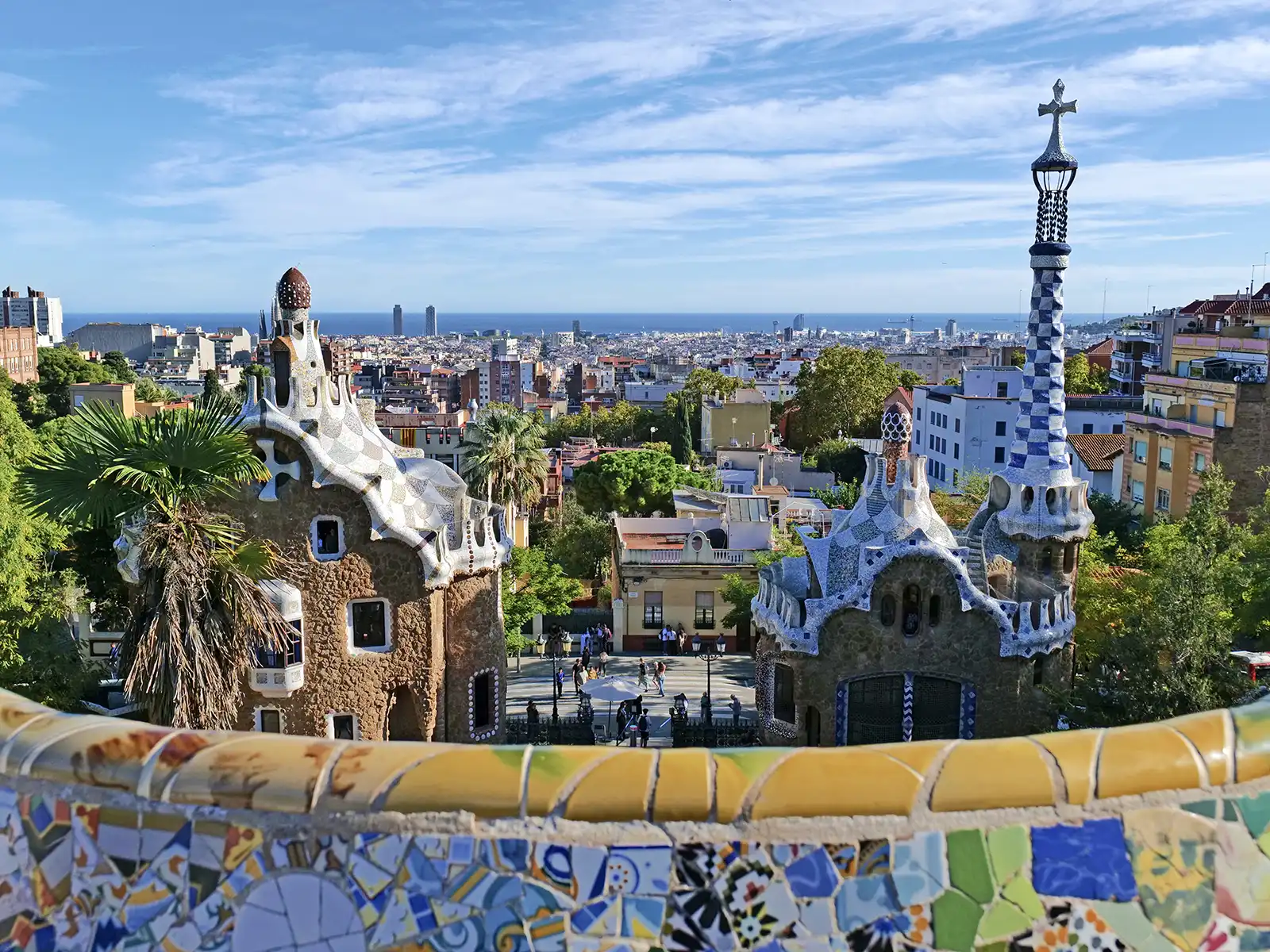12 Best Things to Do in Barcelona, Spain (+What to Skip)
This post may contain affiliate links, including from Amazon and other trusted partners. If you click a link and make a purchase, we may earn a small commission at no extra cost to you. That said, we only recommend products and services we genuinely use and love. Learn more in our Privacy Policy page.

Out of the 50+ countries we’ve visited, Spain remains one of the ones we return to most. Cities like Barcelona, Valencia and Seville stand out not just for their sights, but for their energy and atmosphere. Barcelona in particular keeps drawing us back, and it’s packed with some of the best things to do.
But we know from experience that Barcelona can be overwhelming. We learned that the hard way on our first visit, when we tried to cram in everything and queued for hours. It felt like a rush through the city rather than a real trip.
We’ve been back twice since then, each time booking things in advance and revisiting places with fresh eyes. Some lived up to the hype. Others didn’t. And we found a few new favourites along the way that don’t show up on most lists.
This guide brings together everything we’ve learned from our three trips. You’ll find our 12 best things to do in Barcelona, like Gaudí’s unfinished masterpiece, a candy-coloured concert hall, and a sailing cruise with skyline views.
We’ve also highlighted a few popular spots you can safely skip on your trip.

Don’t miss these!
Our Top Picks for Your Barcelona Trip
Barcelona is one of Europe’s most visited cities, and the best experiences and hotels sell out quickly. Here are the ones we booked ourselves and would book again:
![]() Top experiences in Barcelona
Top experiences in Barcelona
- Skip-the-line Sagrada Família ticket (an absolute must; we once queued two hours without this and never again!)
- Sunset catamaran cruise with live music (we loved the skyline views at sunset)
- Paella cooking experience & Boqueria Market tour (the foodie highlight of our trip)
![]() Best places to to stay in Barcelona
Best places to to stay in Barcelona
- Chi Hotel (our top hotel choice; modern, central, and the rooftop pool was a lifesaver after our long days exploring)
- Motel One Barcelona-Ciutadella (stylish, comfortable, and the rooftop bar over Ciutadella Park was magic at night)
![]() Looking for the best way to get around Spain? Compare rental car rates for Spain here
Looking for the best way to get around Spain? Compare rental car rates for Spain here
12 Essential Things to Do in Barcelona (First-Time Musts)
This section of our Barcelona travel guide focuses on the top attractions and experiences we always recommend to friends visiting for the first time… the ones that really stand out.
1. Visit Gaudí’s La Sagrada Família
The Sagrada Família is the most unique church we’ve ever seen!
Work started back in 1882, and it’s still unfinished today, which is part of the fascination. Gaudí spent the last 12 years of his life dedicated entirely to this project, and you can feel how ambitious it is the moment you walk in.

It’s the most visited landmark in Spain and a UNESCO World Heritage Site. We never visit a place just because it’s the most visited, but this one truly deserves its spot on your Barcelona itinerary.
Inside, it feels modern, colourful, and almost whimsical, unlike the dark Gothic interiors you might expect from a cathedral.
The tree-like columns stretch overhead, and the stained glass throws waves of colour across the space that change with the light. It’s the one place in Barcelona where we’d say the interior is way more impressive than the exterior.
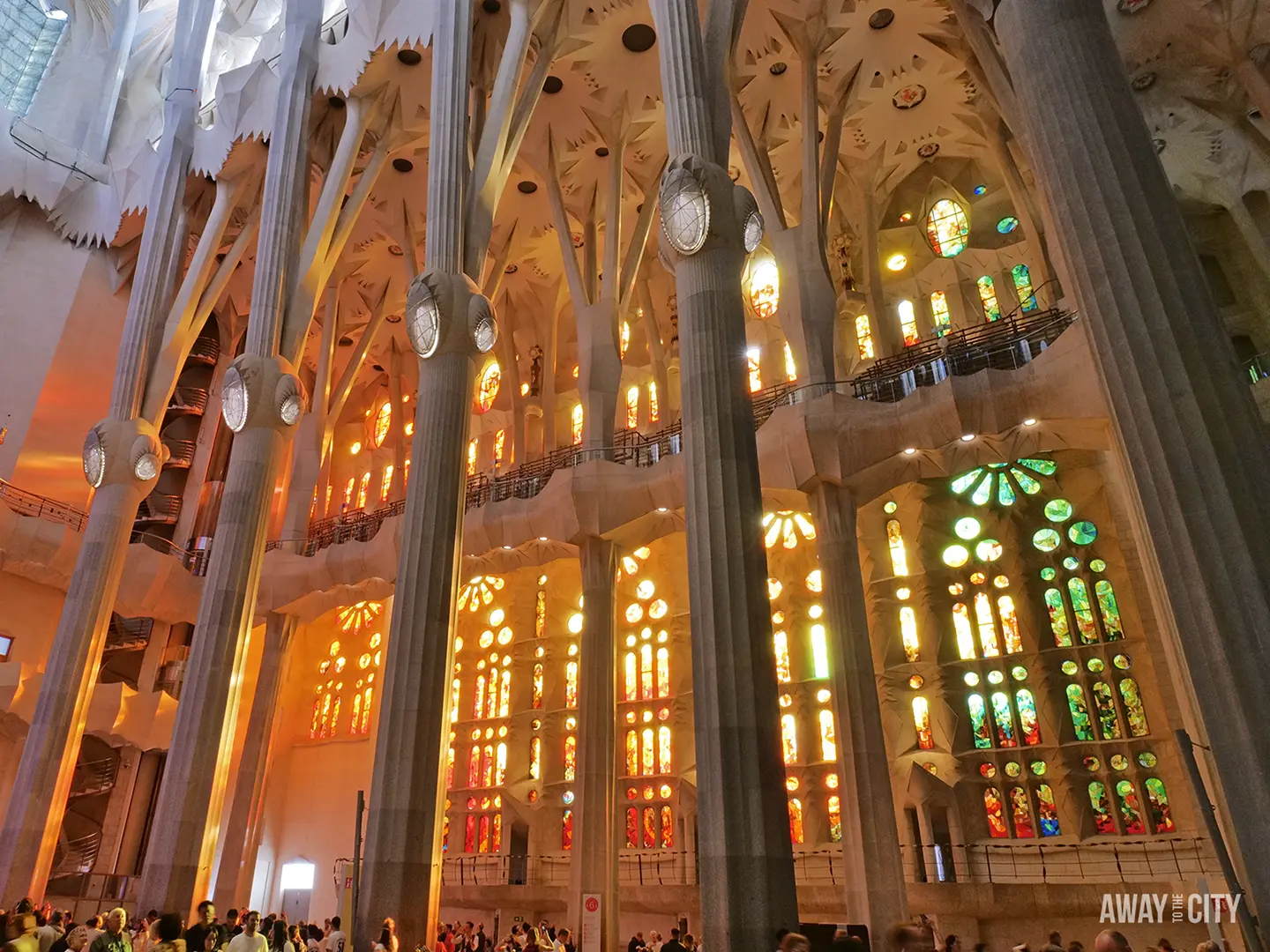

Our top tips: Buy your entry tickets in advance or join a guided tour with skip-the-line access. On our first trip, we queued for almost two hours and by the time we reached the front, tickets had sold out. For the best experience, aim to go between 9am and 10:30am, when it’s less crowded and the light through the stained glass is at its most spectacular.
During your visit, you’ll also have the option to climb one of the two towers (at an extra cost). We did it, but honestly, the view wasn’t that impressive. You can see across the city, but Barcelona’s most iconic landmark (the Sagrada Família itself) isn’t in the picture.
We’d say skip the tower options and save your money. For better views, head to Tibidabo Mountain (you’ll read more about Tibidabo later in this post).

You can find more details in our dedicated guide to everything you need to know about visiting the Sagrada Família.
![]() Don’t let sold-out signs ruin your trip. Book your Sagrada Família tickets ahead of time for the best experience.
Don’t let sold-out signs ruin your trip. Book your Sagrada Família tickets ahead of time for the best experience.
2. Wander the mosaics of Park Güell
We first visited Park Güell back in 2012, and what struck us most was just how colourful it is. Bright mosaics, twisting benches and fairytale gatehouses give the whole place a playful feel, completely different from Gaudí’s other works.
It was meant to be a housing project, but when that plan failed, the grounds were turned into a public park. Today, it’s a UNESCO World Heritage Site and one of Barcelona’s top attractions.
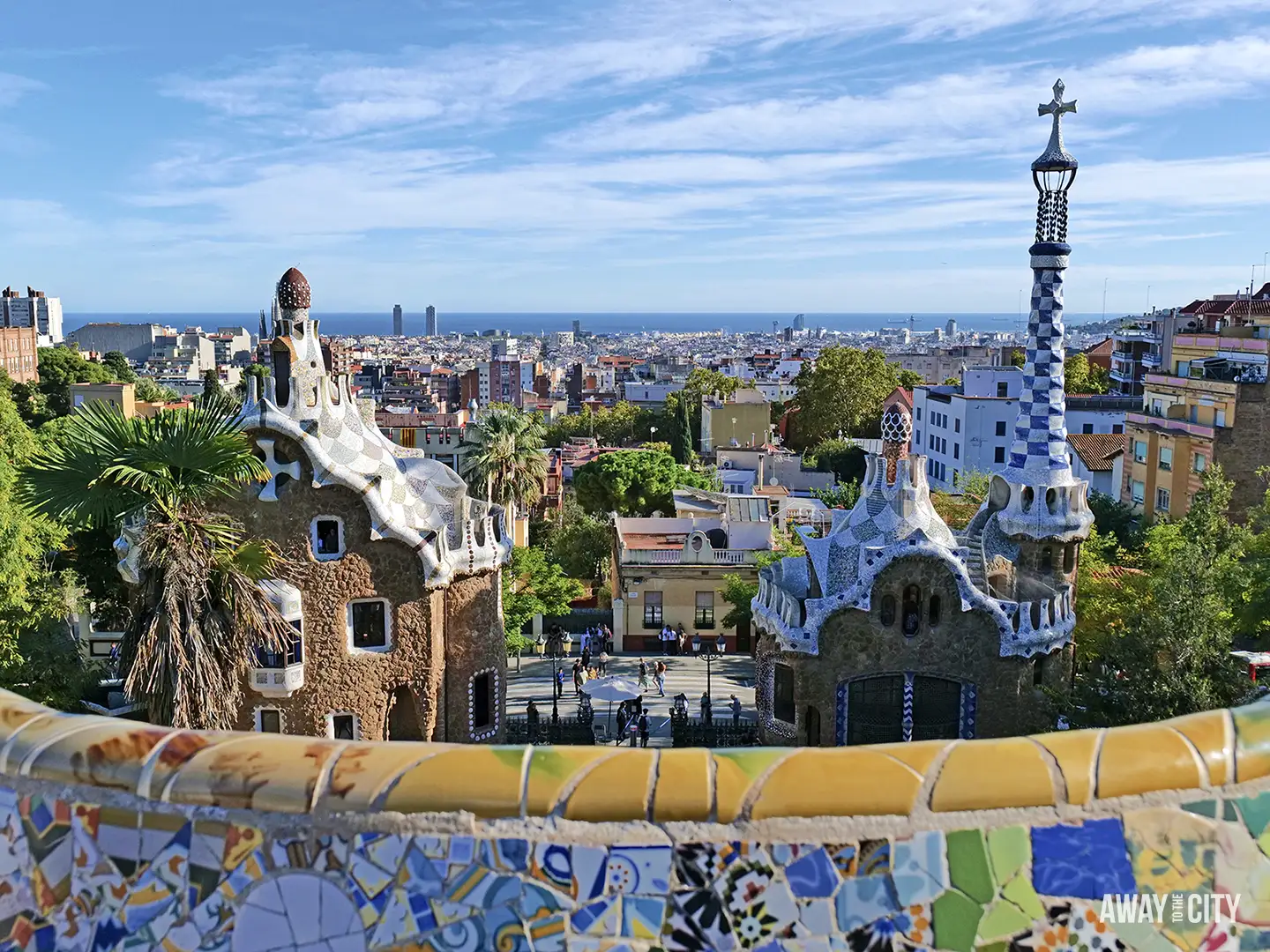
On our first trip, we left feeling it was overrated. Even with entry caps, the park felt busy, and without much context, it seemed more like a photo stop than a meaningful visit.
When we returned on a guided tour, our opinion changed… it added a depth we hadn’t appreciated the first time.

Our top tip: Park Güell is very popular, so we recommend booking your entry tickets in advance. If you want to get more out of your visit, consider this guided tour we joined. Our guide explained Gaudí’s design tricks and the symbolism in the mosaics that we would have never noticed alone, which made the whole experience far more memorable.
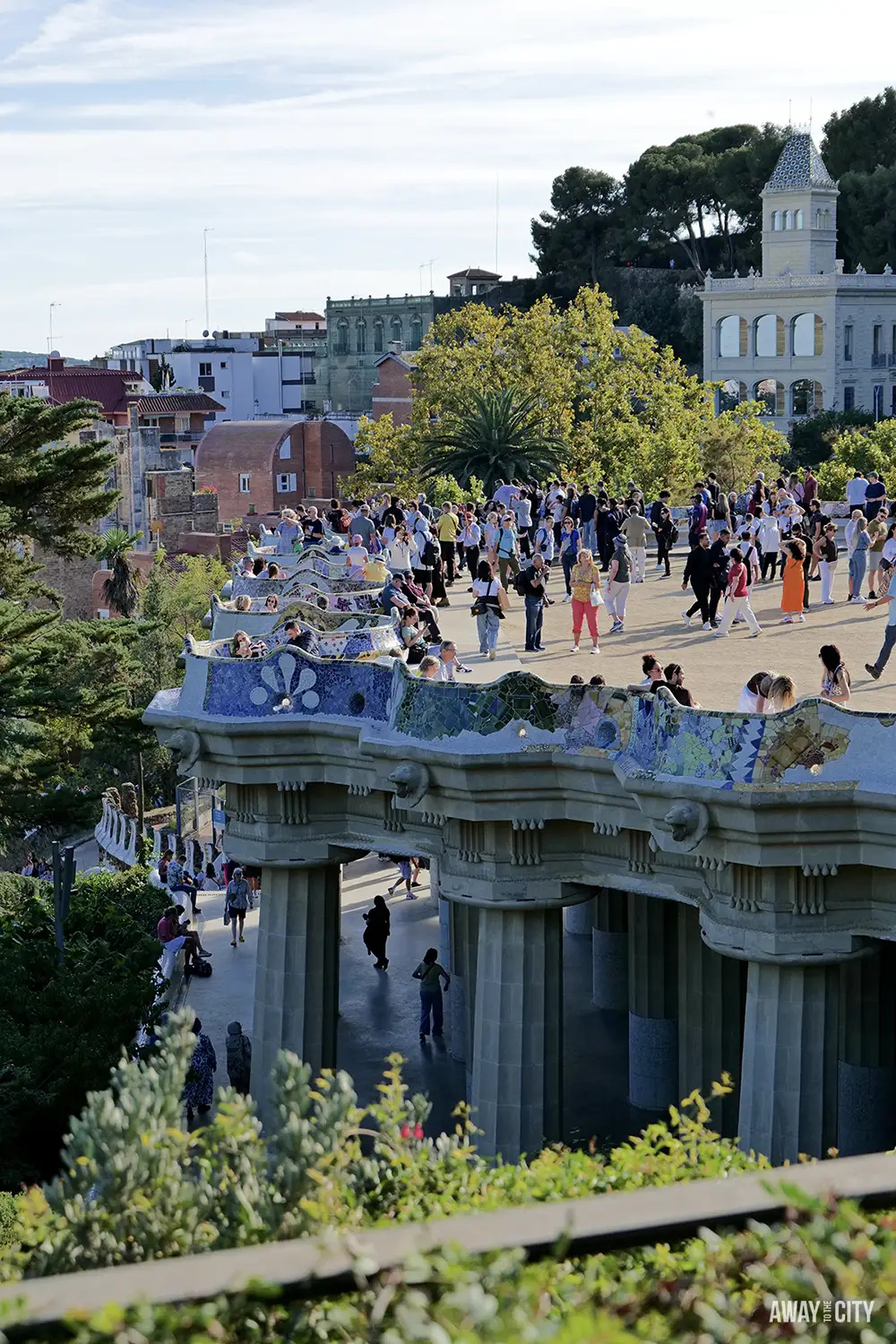
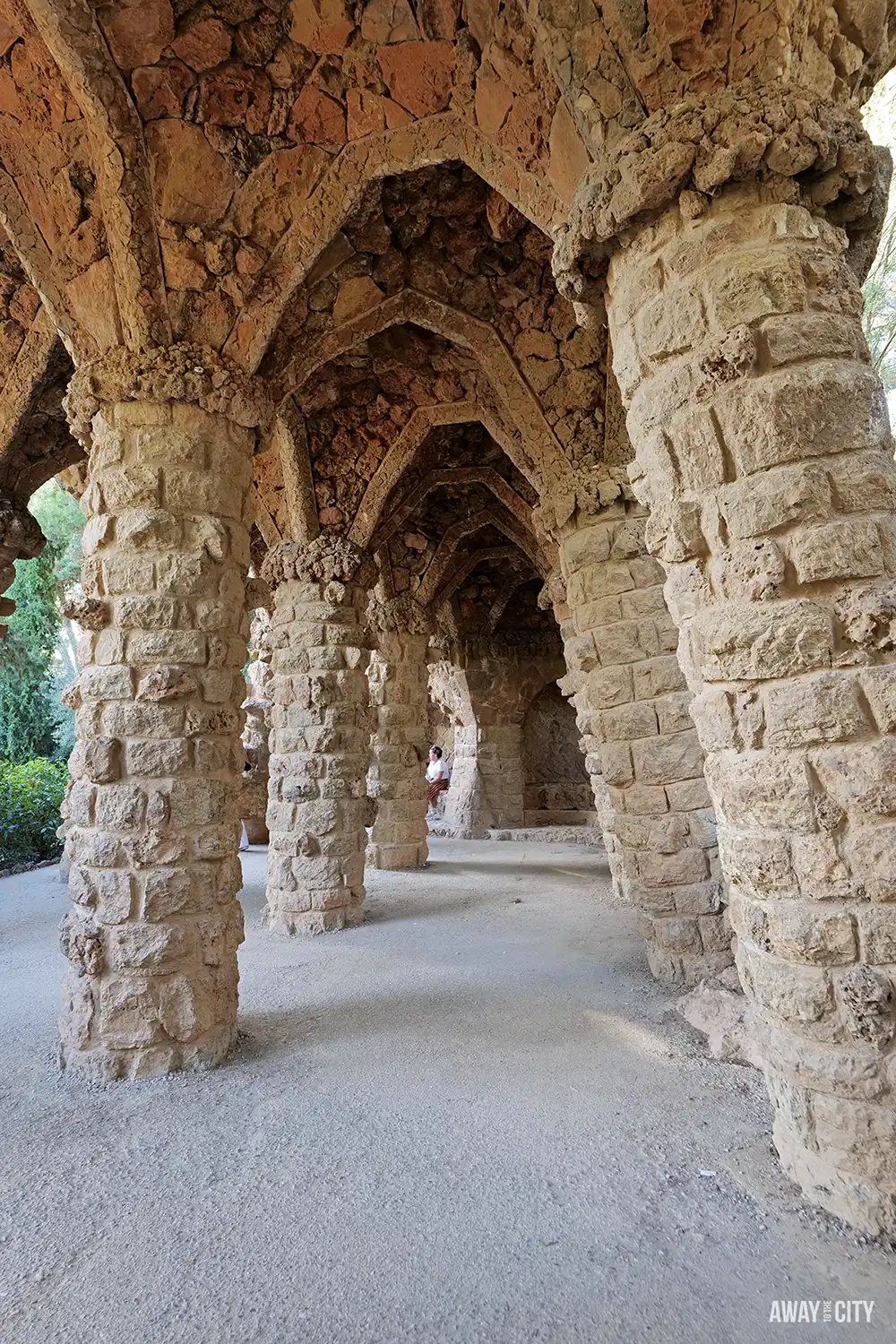
The free areas are fine for a walk, but the (paid) Monumental Zone is where the highlights are: the famous lizard statue, the serpentine benches and the terrace with its sweeping views across Barcelona to the sea.
![]() Tickets are limited and sell out frequently, so purchase your Park Güell tickets in advance to make sure you get in.
Tickets are limited and sell out frequently, so purchase your Park Güell tickets in advance to make sure you get in.
3. Explore the dreamlike interiors of Casa Batlló
Of all Gaudí’s works in Barcelona, Casa Batlló was our favourite. Its colourful facade and bone-like balconies make it look like a fairytale building come to life.
Even on Passeig de Gràcia (Barcelona’s most iconic avenue with impressive architecture), it’s the one that stops people in their tracks.
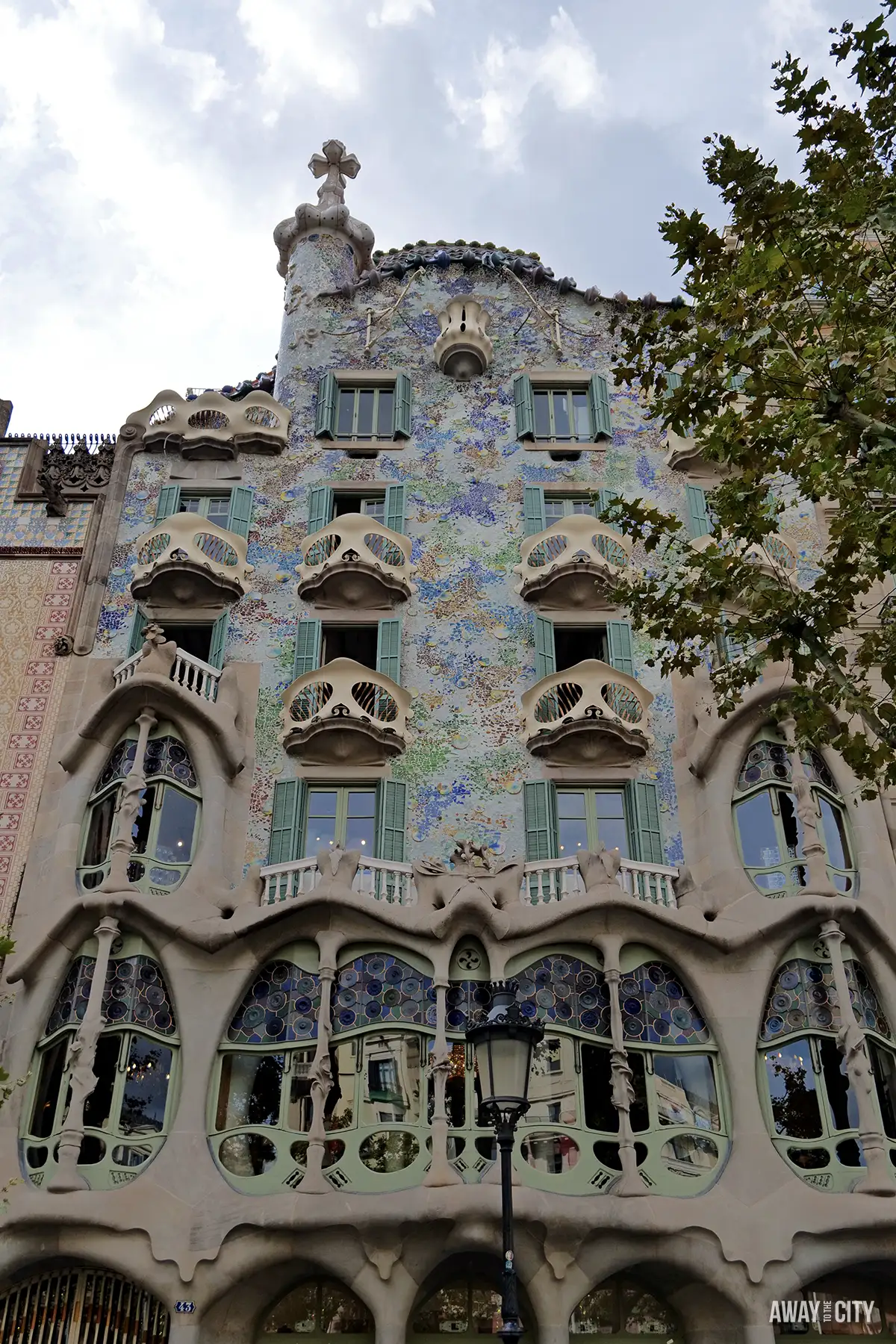
The inside is even more impressive. Staircases flow like waves, stained glass scatters coloured light across the rooms, and the central lightwell shifts in shades of blue that make you feel as if you’re underwater.
It’s less like walking through a house and more like exploring Gaudí’s imagination.

Our top tip: Casa Batlló has four ticket types: Blue, Silver, Gold and Platinum. We recommend the Gold ticket when you purchase your Casa Batlló tickets. It includes access to extra rooms plus an interactive tablet that shows what the interiors looked like when people lived here. It made the visit much more immersive than the standard ticket.

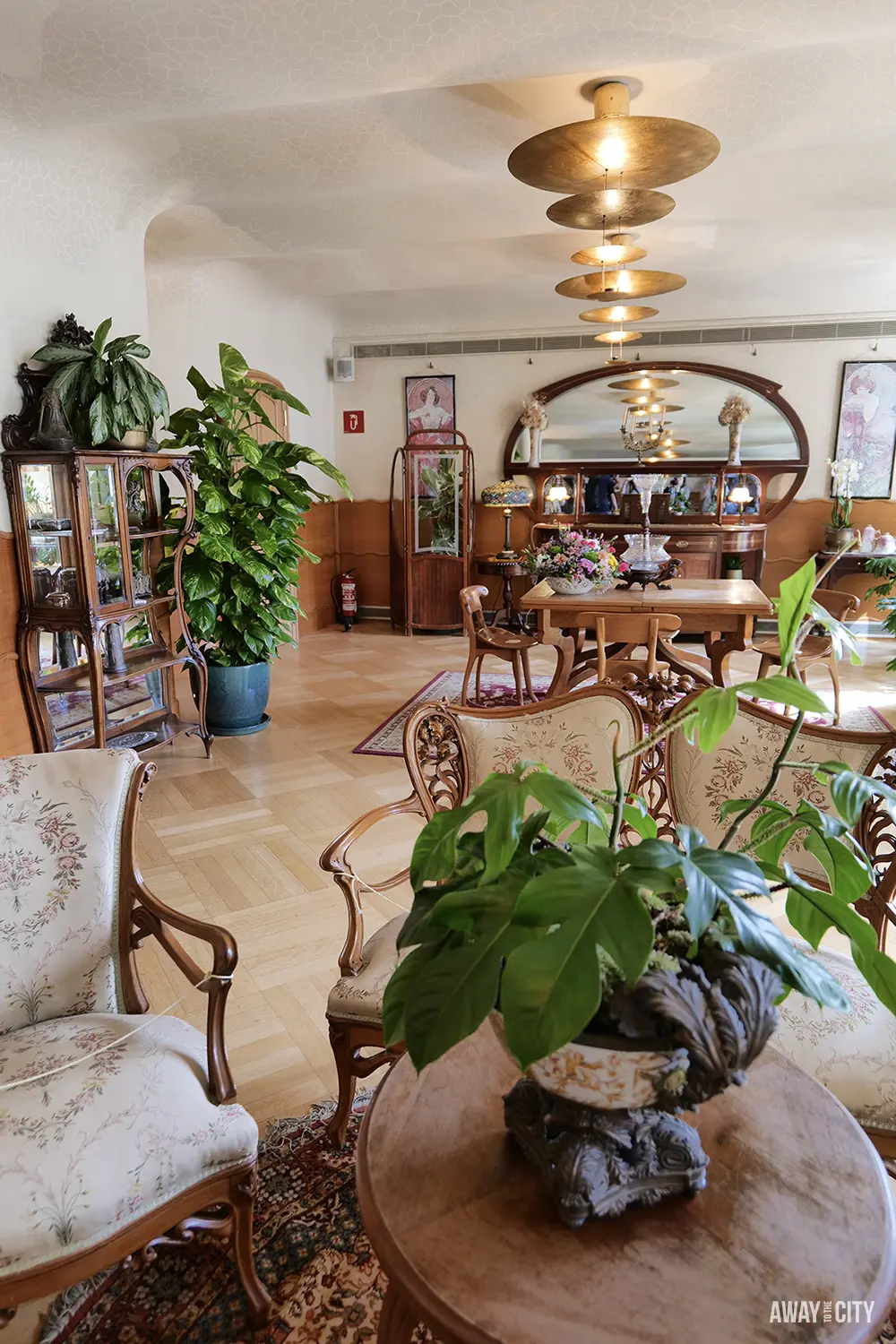
We found Casa Batlló more engaging than La Pedrera (Casa Milà) because of the beautiful details in every room.
The rooftop is another highlight, with its dragon-like spine and playful chimneys. Casa Batlló is one of the few Barcelona tourist attractions that genuinely feels worth the higher ticket price.
![]() Queues can be long, so pre-book your Casa Batlló tickets to guarantee your entry.
Queues can be long, so pre-book your Casa Batlló tickets to guarantee your entry.
4. Try local flavours at Mercat de la Boqueria
Of all Barcelona’s food markets, Mercat de la Boqueria is the one we enjoy most. Yes, it’s loud, busy and admittedly a bit touristy, but the displays of jamón, seafood, sweets and colourful juices make it a fun stop at least once.
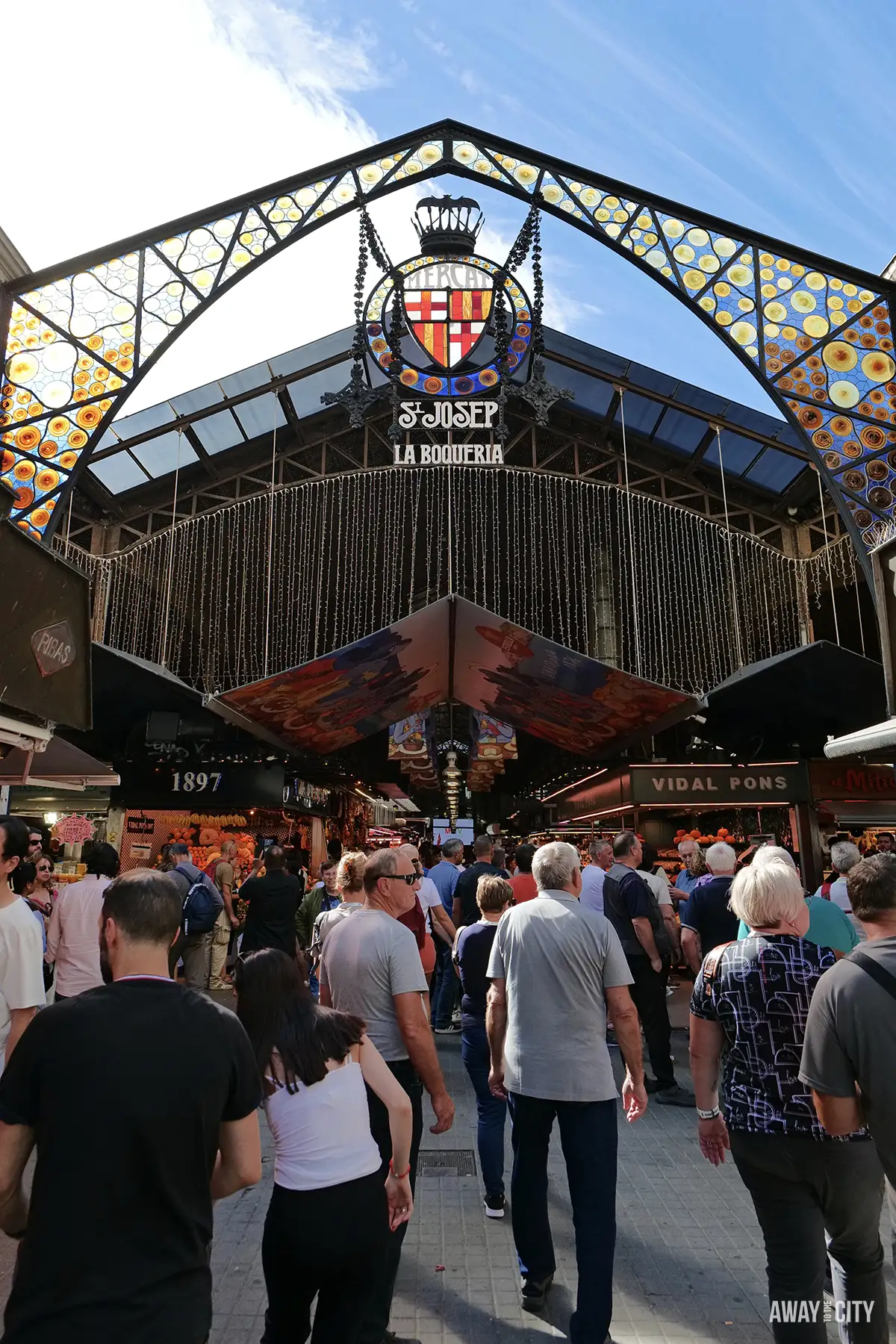
We usually grab a juice and some jamón to snack on, and if we’re lucky enough to get a counter seat, tapas at El Quim is a favourite.
The stalls do fill quickly, so don’t expect a leisurely lunch. The real trick is to come earlier in the day, before the crowds, when you’ll catch locals actually shopping for their daily ingredients.
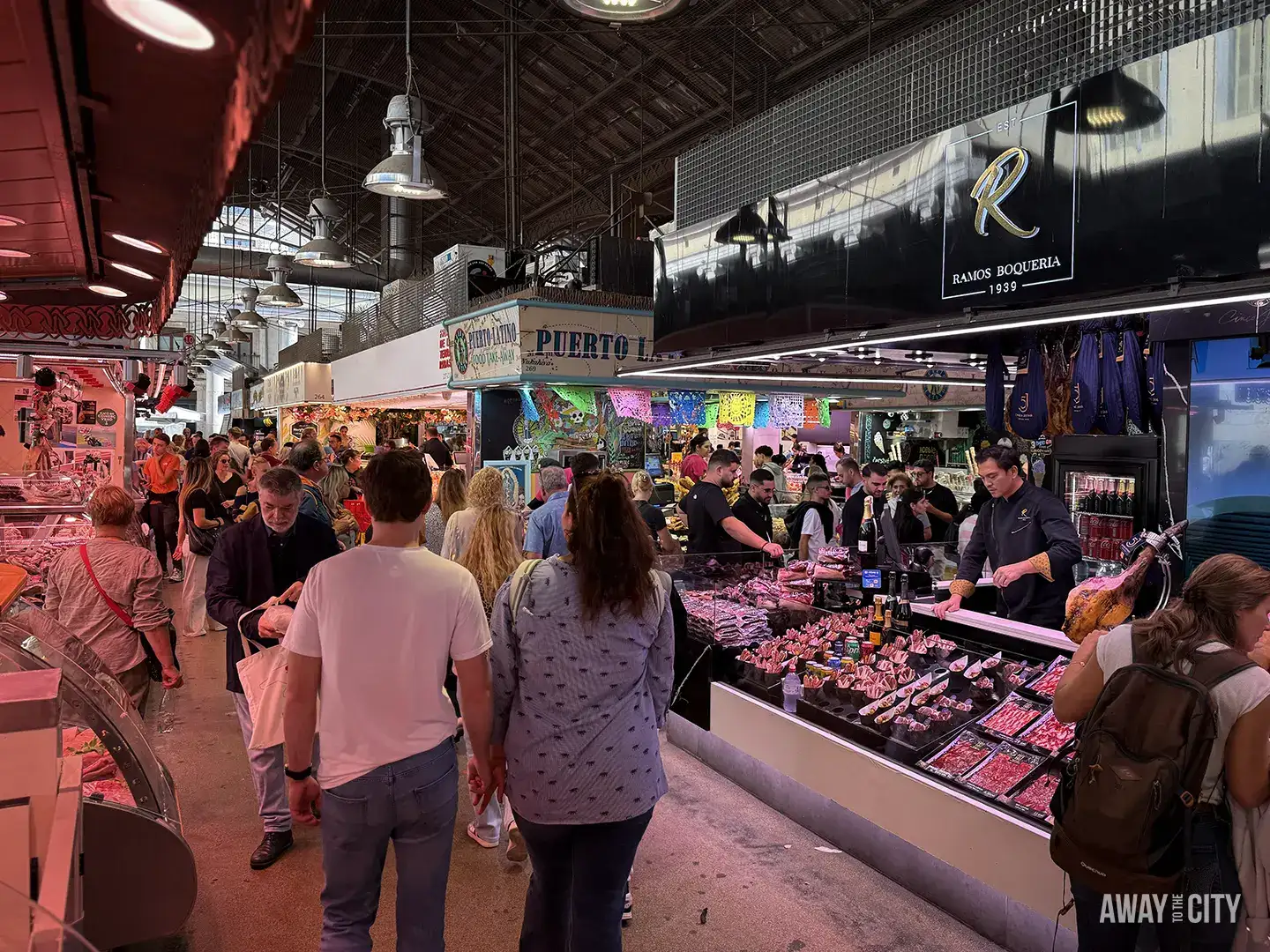

Our top tip: If you’re a foodie, this Boqueria market tour with paella cooking class is a must! You’ll explore the market with a chef, learn about the ingredients, then cook paella, tapas and sangria together. The best part? You’ll sit down to enjoy a proper Catalan feast you’ve helped create.
5. Get lost in the alleys of the Gothic Quarter
The Gothic Quarter is one of the most atmospheric parts of Barcelona, but it can feel overwhelming if you just wander without a plan.
Here are the main highlights to look out for:
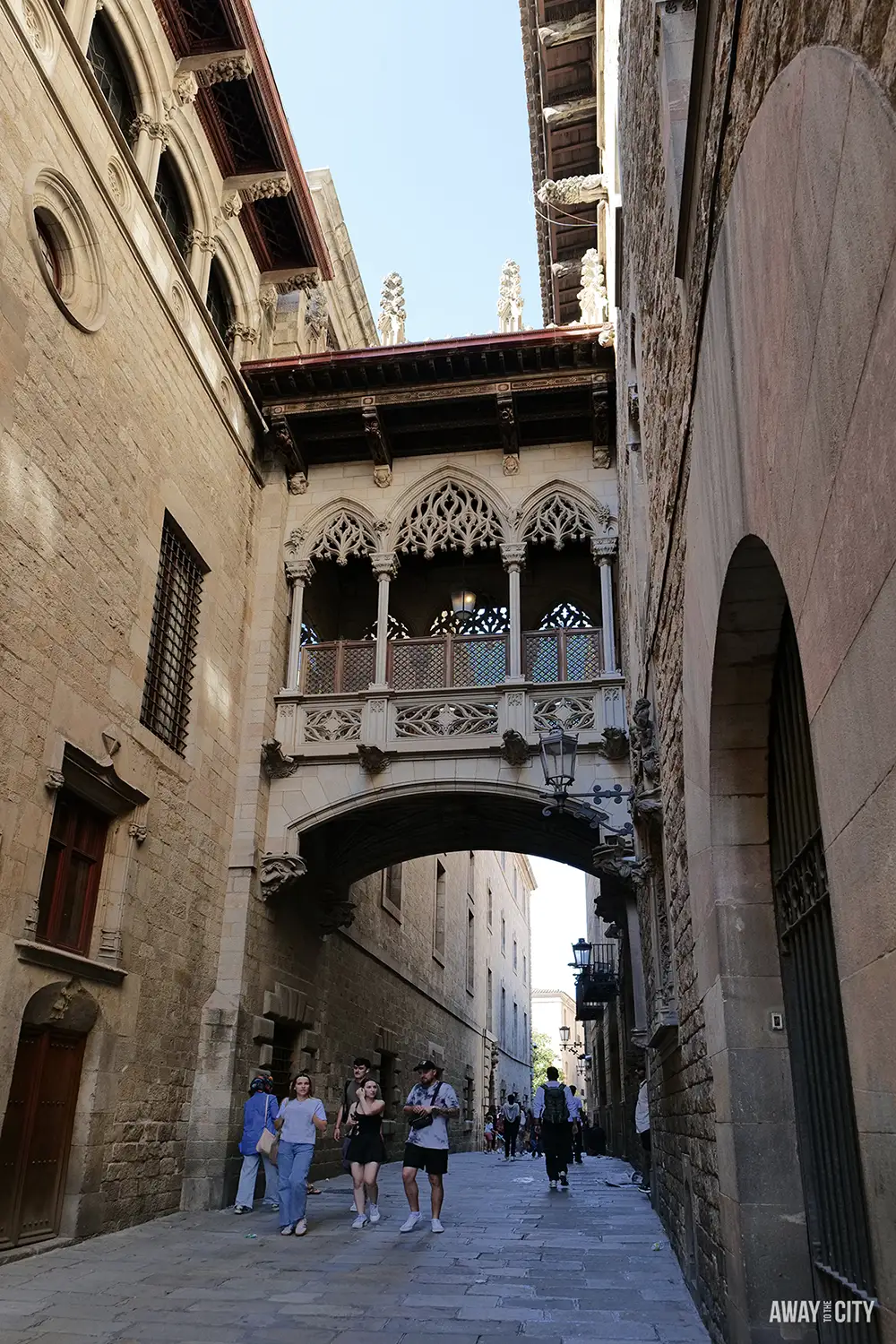

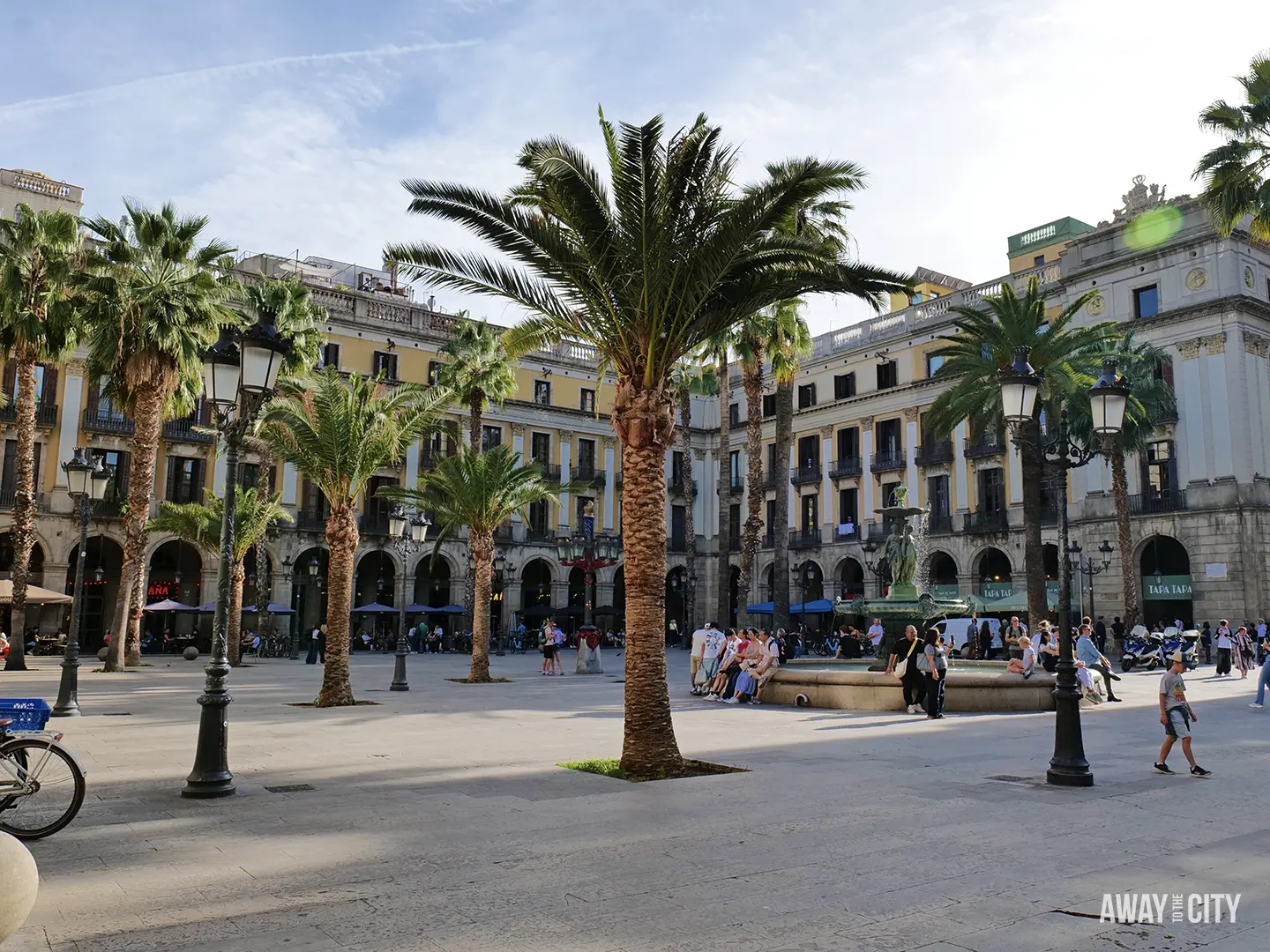

Our top tip: Instead of just passing through, try experiencing the Gothic Quarter at night. We joined this Gothic Quarter ghosts & legends walking tour, and it turned out to be one of the most memorable evenings of our trip. The guide mixed history with chilling legends, and walking past landmarks like the Cathedral and Bishop’s Bridge after dark gave the whole area a completely different atmosphere. It was such a fun way to see a side of the Gothic Quarter most visitors miss during the day.

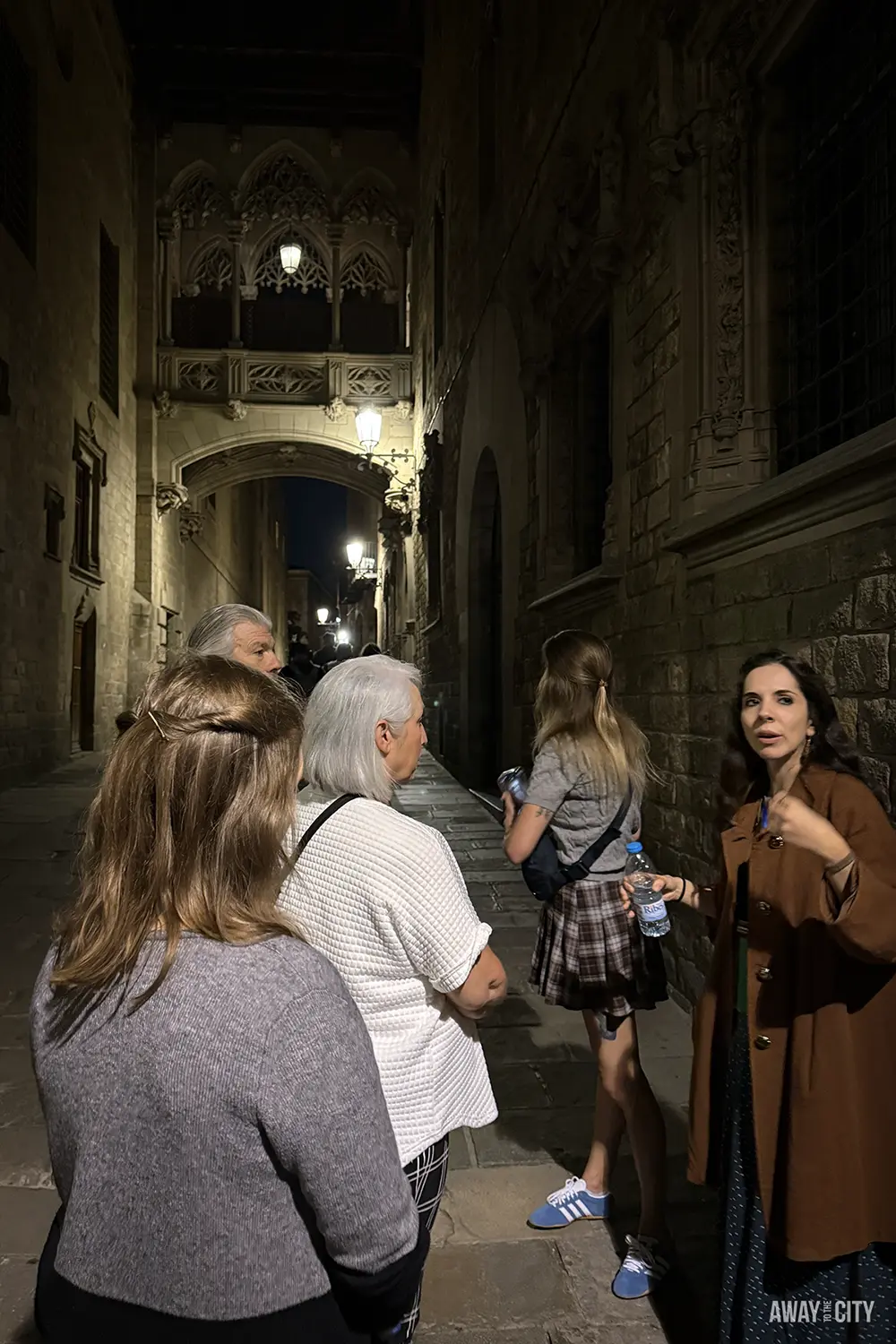
6. Watch the sunset from the rooftop of La Pedrera
La Pedrera, also known as Casa Milà, is another Gaudí building on Passeig de Gràcia. It definitely grabs your attention from the street, but the part you’ll remember most is the rooftop.
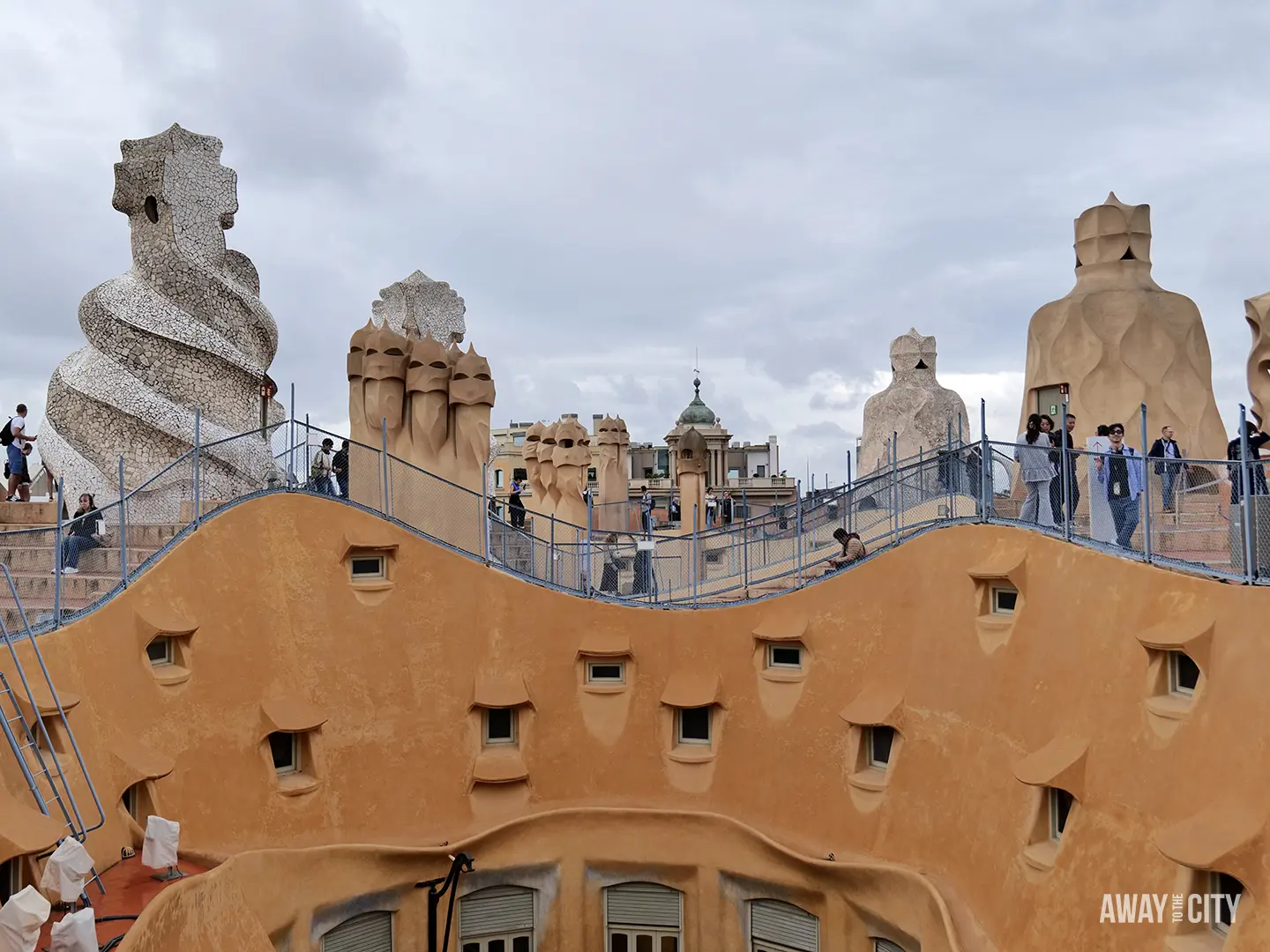
The roof terrace is unlike anything else in Barcelona. Chimneys twist into sculptural shapes, stairways curve in all directions, and the skyline opens up around you.
It’s one of the most unique viewpoints in the city, especially if you visit around sunset or even catch the night experience. Here’s a video of what to expect:

Our top tip: We tried La Pedrera during the day on one trip and went back for the La Pedrera night experience on another. The night version easily won us over! The rooftop light show across the chimneys makes it feel magical, and it’s far less crowded than during the day.
Inside, you’ll find Gaudí’s original apartments and an exhibition about his work. They’re interesting, but for us, the highlight was definitely the rooftop.
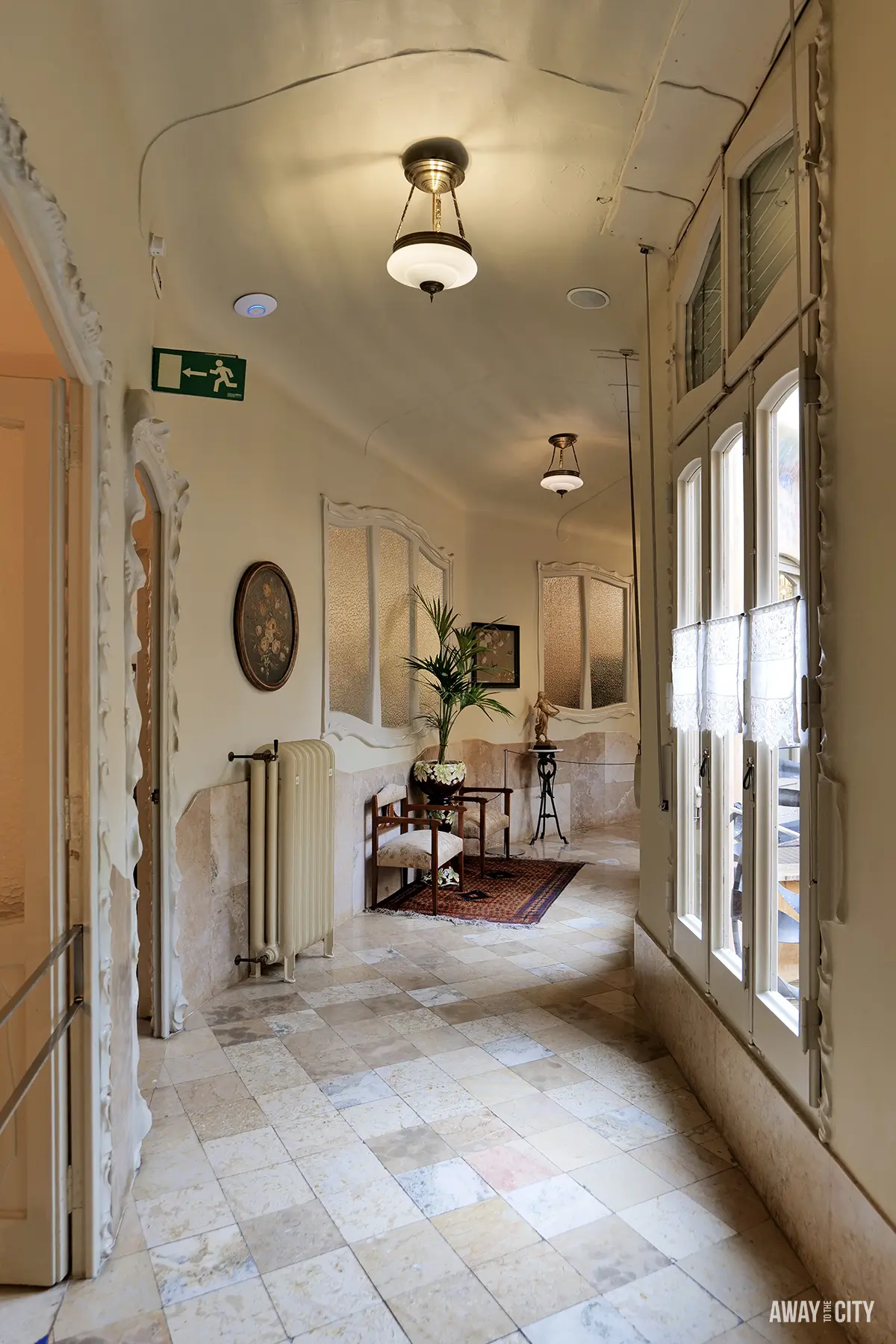

If you have to pick just one, we’d lean towards Casa Batlló. Still, don’t write off La Pedrera because the rooftop alone makes it special.
7. Take a tour of the Palau de la Música Catalana
The Palau de la Música Catalana was one of the biggest surprises of our trips to Barcelona. From the street, you might not guess what’s waiting inside, but the moment we stepped into the concert hall, we were stunned!
There’s a huge stained-glass skylight in the middle that looks like a sunburst, and the whole place is just bursting with colour. Everywhere you look, there are mosaics and little details tucked into every corner.

We joined this guided tour and would recommend it over a simple entry ticket. Our guide brought the building to life with stories about its history and Catalan symbolism.
And standing on the stage while the organ played a few notes at the end was a real highlight.
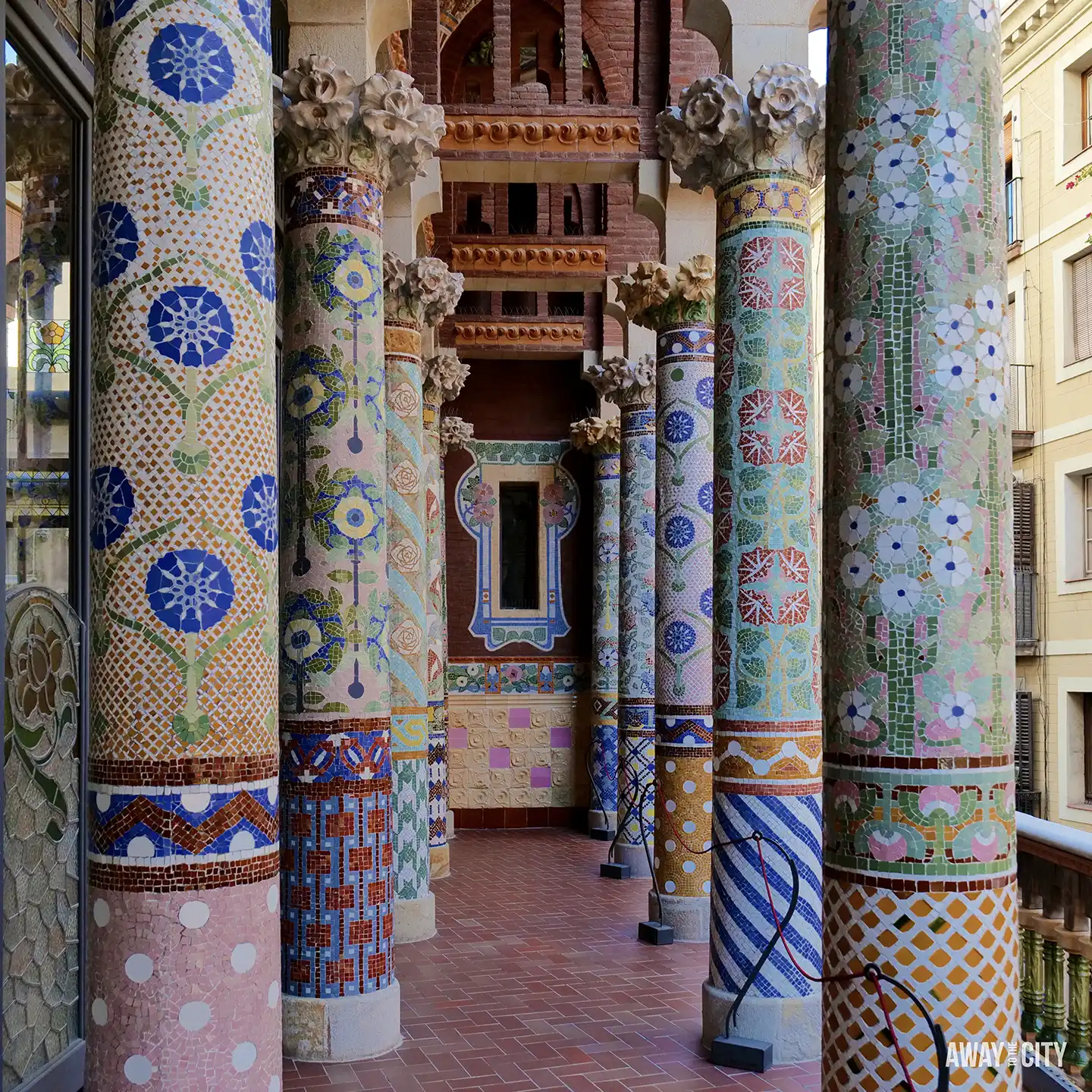
This place is a highlight that often gets missed on typical Barcelona sightseeing lists. But this cultural centre shows a very different side of the city’s architecture beyond Gaudí.
![]() Book the same guided tour we did to enjoy access to areas of Palau de la Música that are usually not open to the public.
Book the same guided tour we did to enjoy access to areas of Palau de la Música that are usually not open to the public.
8. Discover the Art Nouveau beauty of Sant Pau Recinte Modernista
We first came across Sant Pau Recinte Modernista while walking back from the Sagrada Família, and it instantly became one of our favourite discoveries in Barcelona.
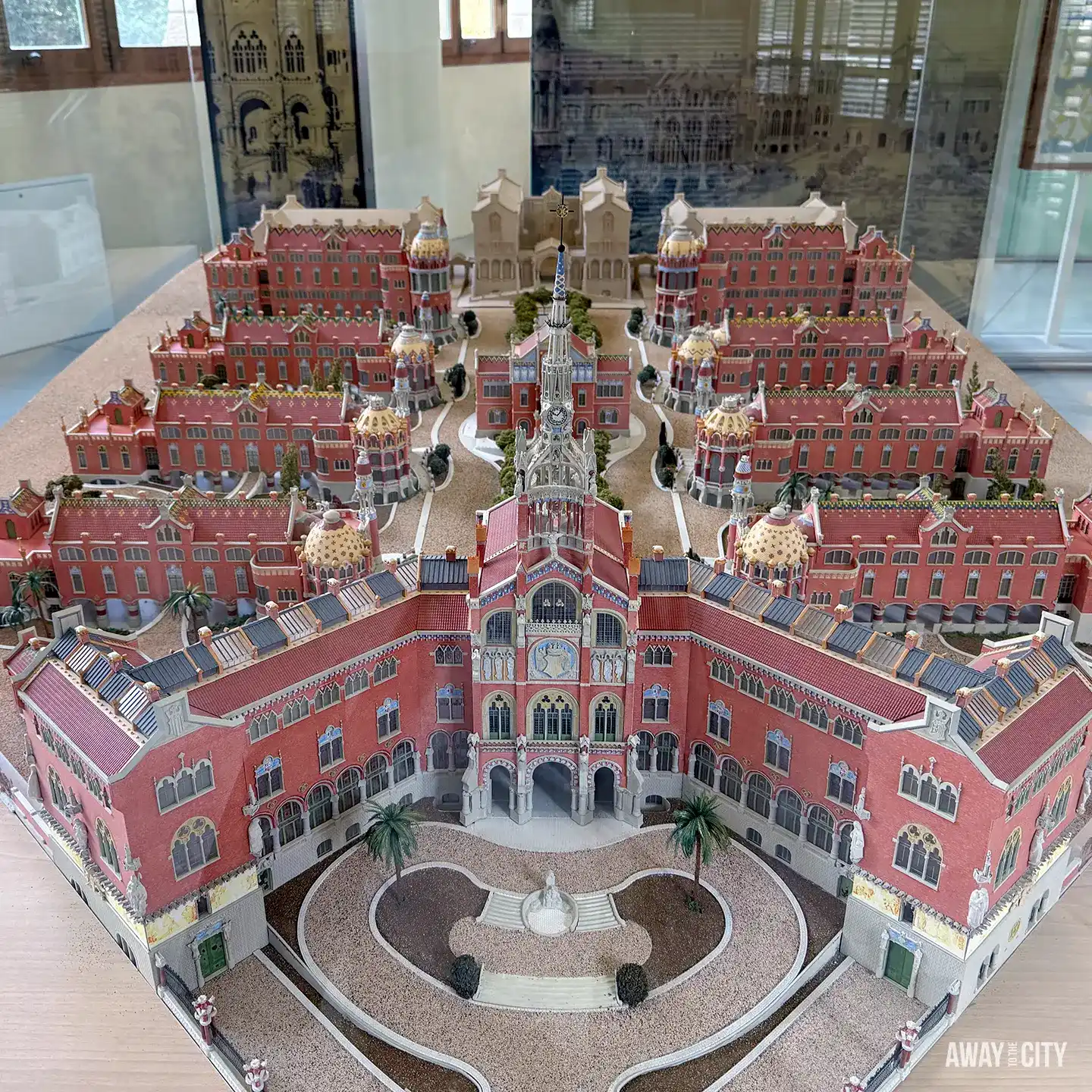
From the outside, it looks like an elegant hospital complex. And once you step into the grounds, it feels more like a miniature city of mosaics and domes.
The pink entrance hall stood out most for us. It’s full of colour and detail, and the glass corridors lined with Catalan motifs feel almost endless.
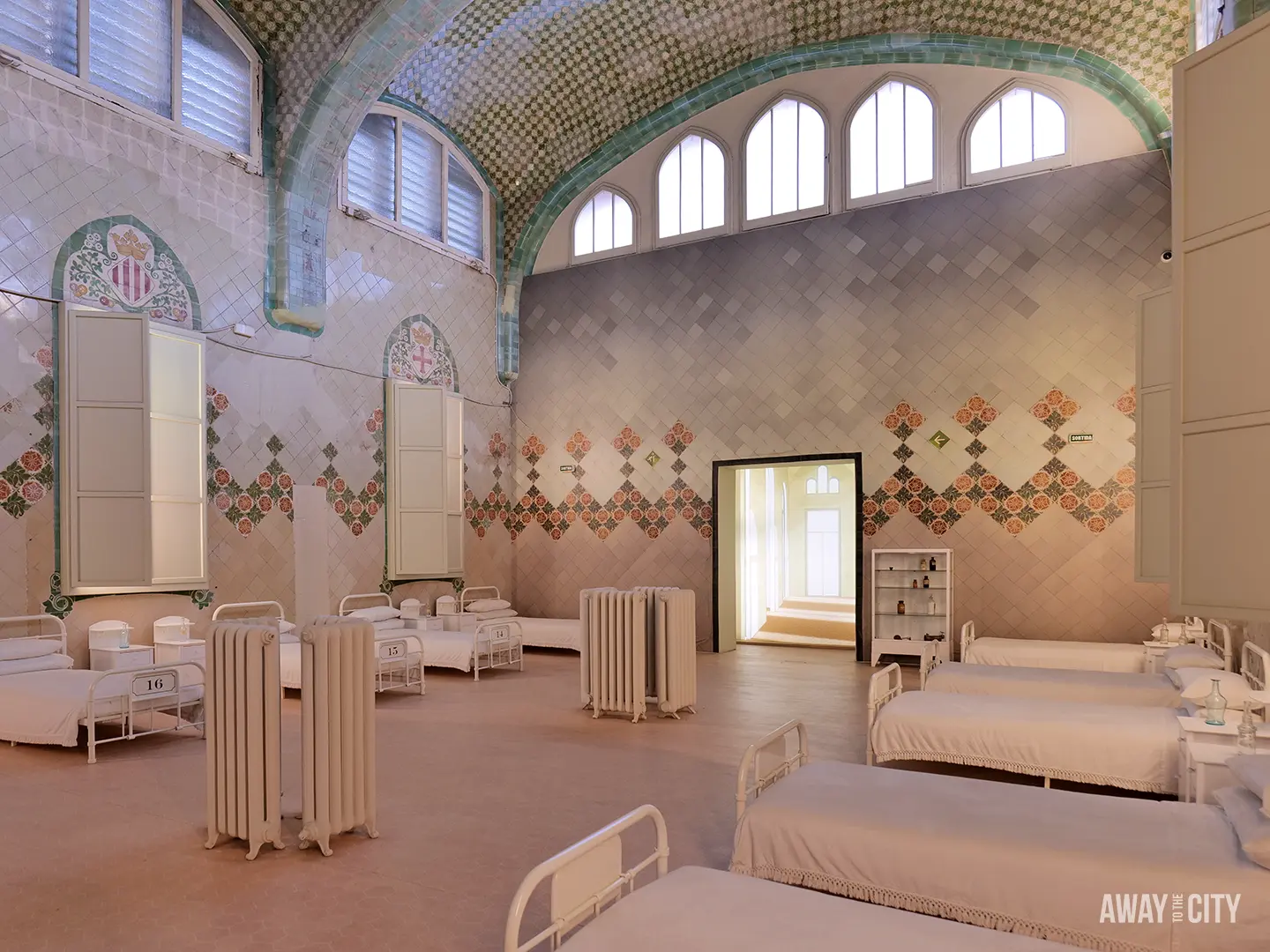
Another detail we loved was the view of the Sagrada Família framed through stained glass, a reminder of how close the two sites are yet how different they feel.
Unlike the busy Gaudí attractions, Sant Pau was calm and spacious. If you’re looking for something special away from the crowds, this place is a must! It totally deserves a place among Barcelona’s most memorable landmarks.


![]() You can book ahead if you like, but it’s usually quiet enough that you can just grab a ticket when you get there.
You can book ahead if you like, but it’s usually quiet enough that you can just grab a ticket when you get there.
9. Experience the beach and waterfront vibe at Barceloneta
While Barcelona’s architecture and history are the main draws, the city also has a coastline of sandy beaches.
The most famous is Barceloneta Beach, right next to the Old Town, with a busy promenade full of tapas bars, seafood restaurants and street performers.
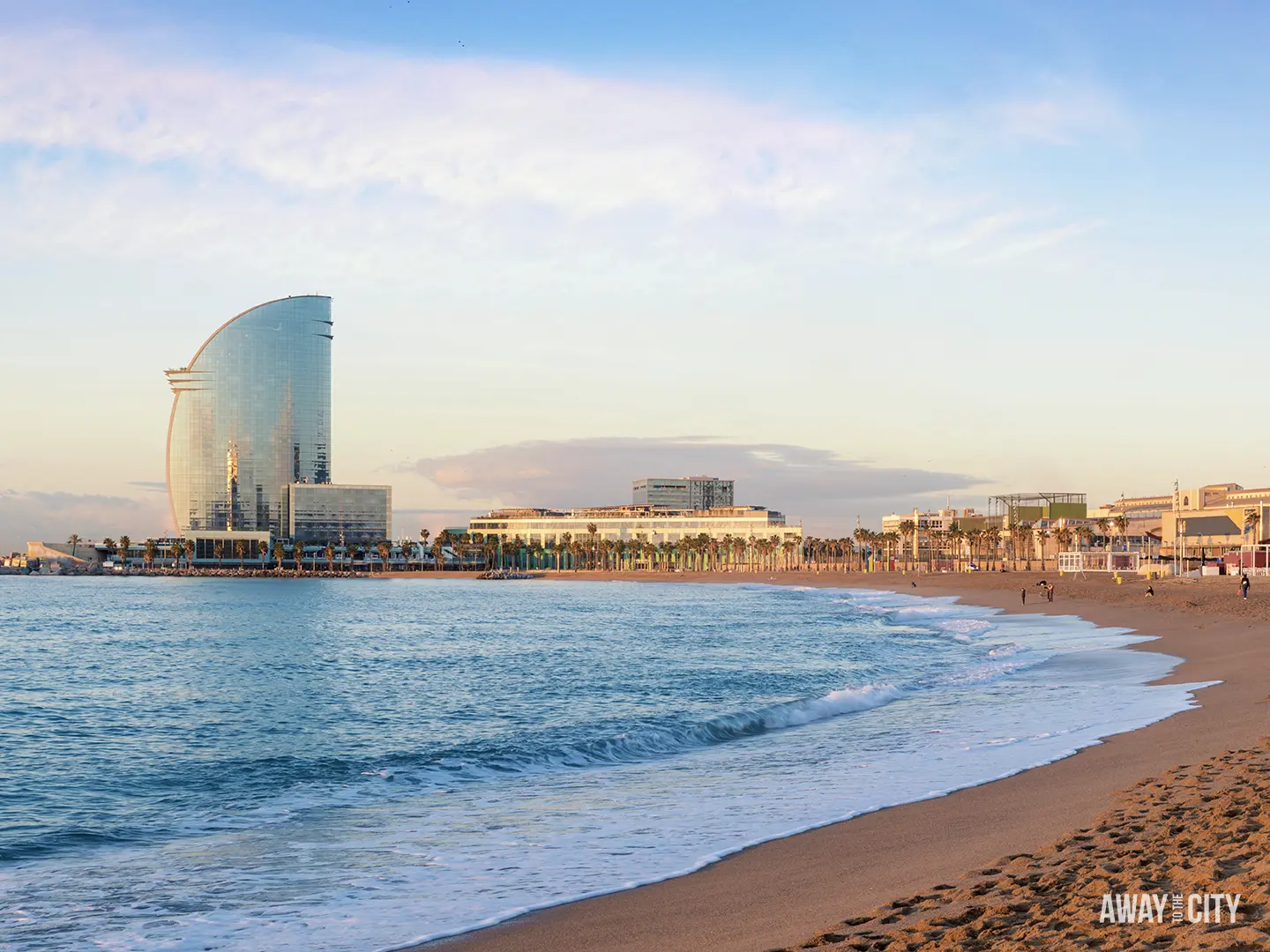
We must admit, we’re not the type who can spend hours lying on a beach; we get restless and prefer exploring. But that’s what makes Barceloneta fun. You can stroll the promenade and then be back in the Gothic Quarter in minutes.
The beach itself can feel crowded, so for a more relaxed spot, you can continue north to Nova Icària or Bogatell. Still, Barceloneta is a really solid choice, and the whole waterfront is worth experiencing.
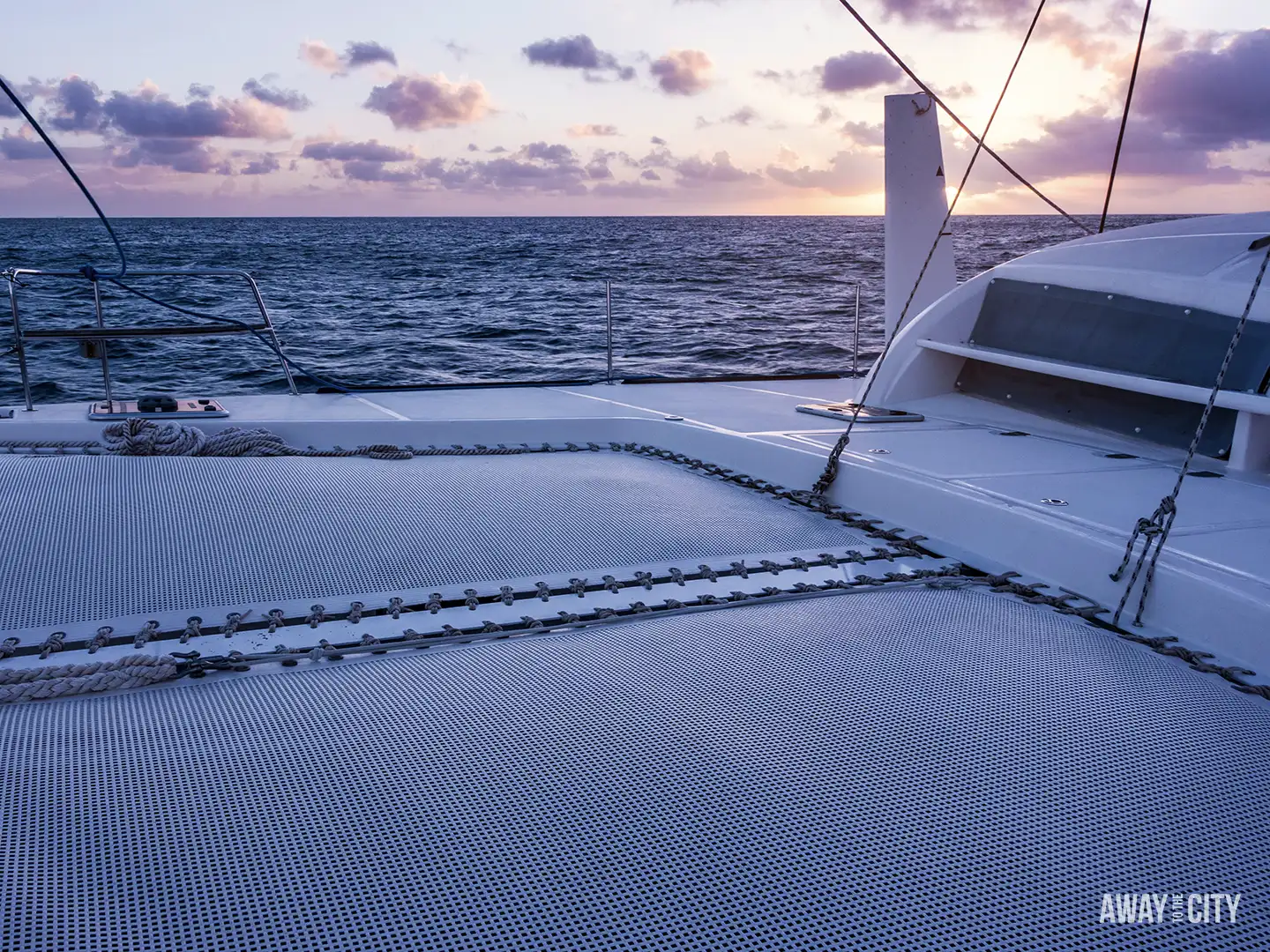

Our top tip: If you only do one thing on the waterfront, book a sunset catamaran cruise with live music. We joined this catamaran cruise, and it was such a highlight. Watching the skyline light up while a band played jazz made the evening feel special. Drinks are available on board, the vibe is relaxed, and the views of the city from the water are fantastic.
10. Soak up the views from Tibidabo Mountain
Tibidabo feels a bit like a secret side of Barcelona. Not many tourists make it up here, but it’s worth the trip.
We’d already climbed our fair share of hills and mountains in the city, so this time we took the funicular. It drops you right at the top, where a mix of church spires and retro fairground rides suddenly comes into view.
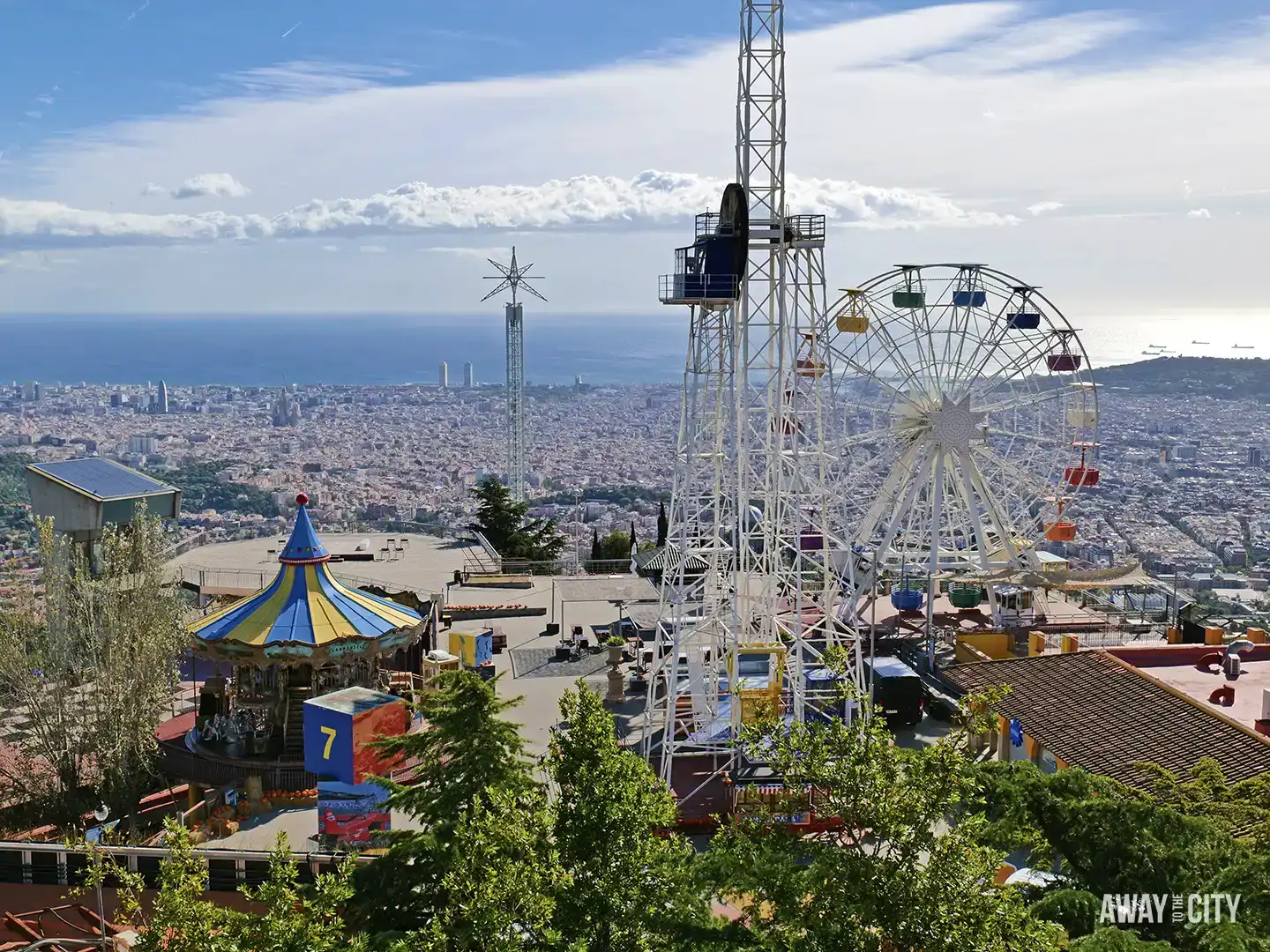
The Sagrat Cor Church immediately stands out, with its tall spires and a statue of Christ stretching out over the skyline. Right beside it is the Tibidabo amusement park, which has been running since 1901.
We loved the retro vibe of Tibidabo: colourful rides, a carousel with old-school charm, and a Ferris wheel that’s been part of the skyline for decades. It’s not huge, but wandering around felt like stepping back in time.

What really makes the trip special are the views! You can see the whole city spread out below, the Mediterranean in the distance and green hills rolling away behind you. It’s a perspective on Barcelona that you don’t get anywhere else.


Our top tip: Don’t expect a big theme park. Tibidabo is all about its vintage rides, the beautiful church and those incredible views. Go for the atmosphere, not the adrenaline.
11. Stroll through the Superilla Peatonal Sant Antoni
We stumbled across this neighbourhood on our latest trip to Barcelona and totally fell in love with it. It feels like real Barcelona and is a genuine hidden gem in the city.
Unlike La Rambla or the Gothic Quarter (and we do love the Gothic Quarter!), Sant Antoni isn’t packed with tour groups.
You’ll see locals chatting on benches, kids racing by on scooters, and cafés full of people who actually live here. It’s one of those areas that gives you that “I could see myself living here” feeling (at least for us!).

The superilla (or “superblock”) concept turns several city streets into one large pedestrian-friendly zone. There’s barely any car traffic, so you can wander freely between cafés, markets, and small shops without constantly dodging vehicles.
It’s a brilliant example of how modern urban design can make a city feel calmer and more livable.
Right in the middle is the Mercat de Sant Antoni, a beautiful 19th-century iron market hall restored in 2018. If you’re not a fan of crowded market halls, this one’s for you. It’s the organised, laid-back version of La Boqueria.

Our top tip: Sant Antoni is café heaven! Every corner has a terrace, from modern brunch spots to classic Catalan bars. Our go-tos are Federal Café for breakfast and Olivia Bistro for lunch, both perfect for people-watching and soaking up the local vibe.
Sant Antoni might not appear on every “top things to do” list, but we think it’s one of those places that makes you feel like you really know the city.
12. Relax in Parc de la Ciutadella’s green spaces
Parc de la Ciutadella is Barcelona’s central park and one of the best places to pause after a busy day of sightseeing.
Locals stretch out on the grass, others wander the paths or sit by the lake, and the whole place feels like a green break in the middle of the city.
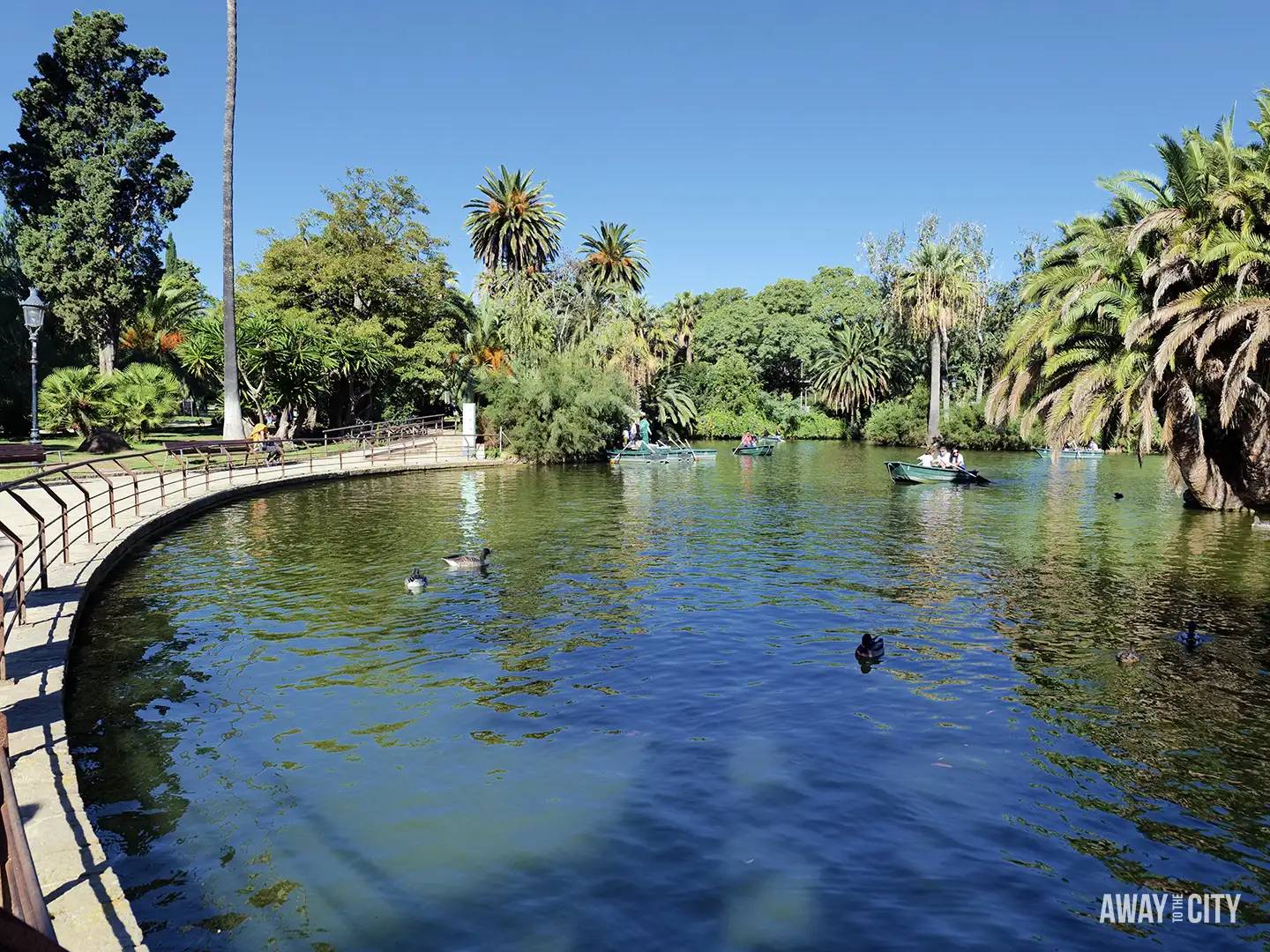
Enter the park through the Arc de Triomf. It takes you straight in and makes a great photo stop before you start exploring.
Once inside, we loved the greenhouses (Hivernacle and Umbracle) in the park. We’re not particularly fond of plants, but these glass pavilions are stunning to wander through and so photogenic.
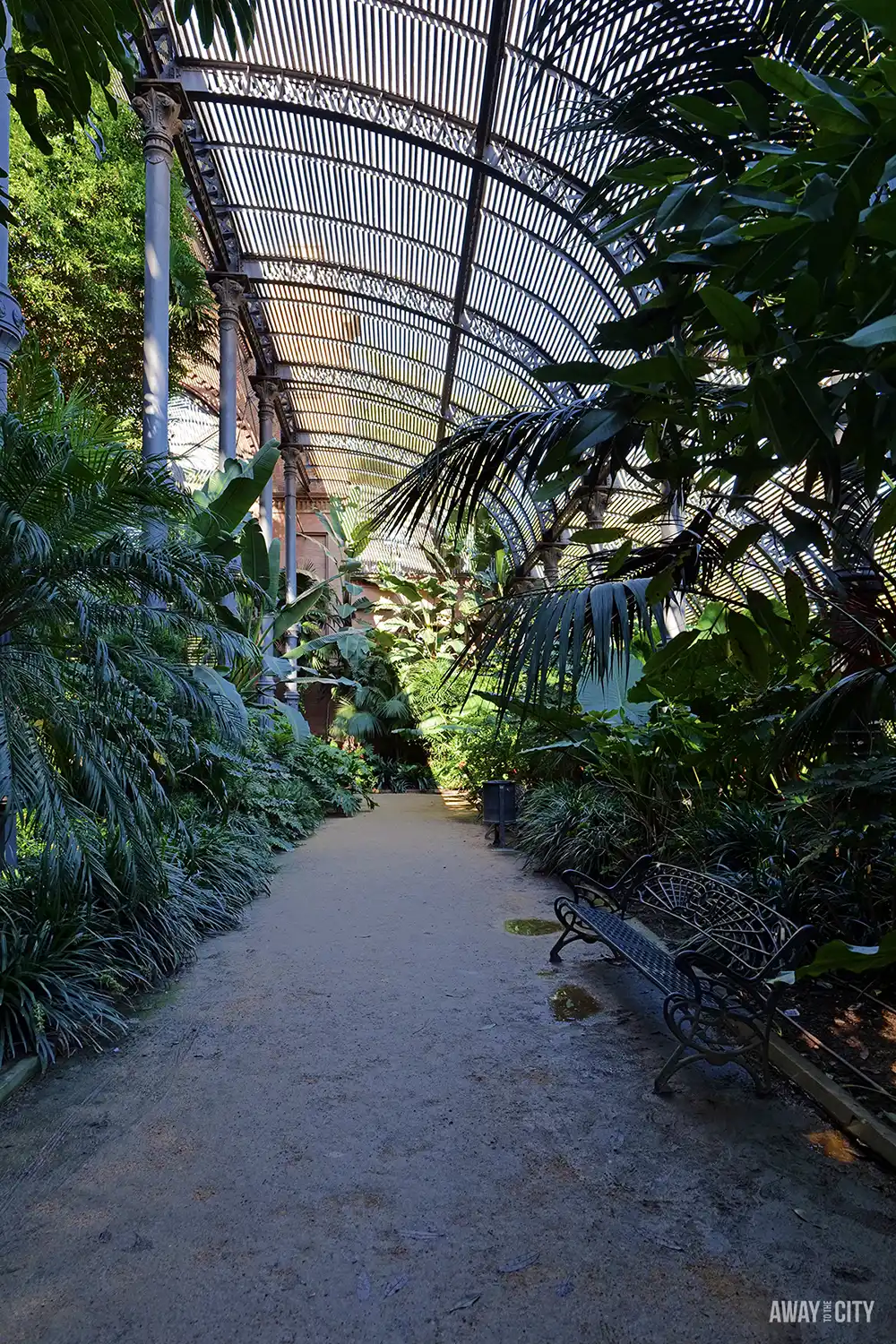

The park is also home to one of the city’s grandest fountains (the Cascada Monumental) and a small boating lake, so there’s plenty to see if you want to spend more time here.
Other Great Things to Do in Barcelona (If You’ve Covered the Essentials)
Our “Best Things to Do” guides always focus on the experiences we think are truly unmissable on your first visit.
But if you’ve already covered the 12 things featured in this guide before and you’ve got extra time in Barcelona, here are a few places that are also worth checking out:
Bunkers del Carmel – A former Civil War bunker that’s now one of the city’s most popular sunset spots. The views stretch across Barcelona and out to the sea. Expect plenty of younger crowds gathering here in the evenings; still, it’s one of the best free vantage points in the city.
Port Vell – Once Barcelona’s old harbour, Port Vell has been redeveloped into a lively waterfront area with a marina, shopping centre and plenty of places to eat. It’s a pleasant spot for an evening stroll, especially when the yachts are lit up. The aquarium is also here, though we’d say the real highlight is simply walking along the water and enjoying the stunning sea views.

Picasso Museum – We’re not huge fans of Picasso ourselves, which made it a pleasant surprise that this museum held our attention. The focus on his early works shows how his style evolved, and for art lovers, it’s a rewarding stop. Book ahead, as it’s one of the city’s top attractions and often gets crowded.
Casa Vicens – Gaudí’s first house and, in our opinion, one of the city’s hidden gems. Its Moorish and Oriental influences make it feel very different from his later works, and the calmer atmosphere makes visiting more relaxed than Casa Batlló or La Pedrera. We’ve listed it here as optional, since other Gaudí buildings are already included in the essentials; however, for us, it still ranks as one of the most worthwhile.
Montserrat Day Trip – A dramatic mountain range about an hour from Barcelona, home to a monastery, jagged peaks and hiking trails. We always love a day trip, and this is a great one if you want to see a different side of Catalonia. That said, Barcelona itself has so much to offer that we’d only recommend this if you have extra time.
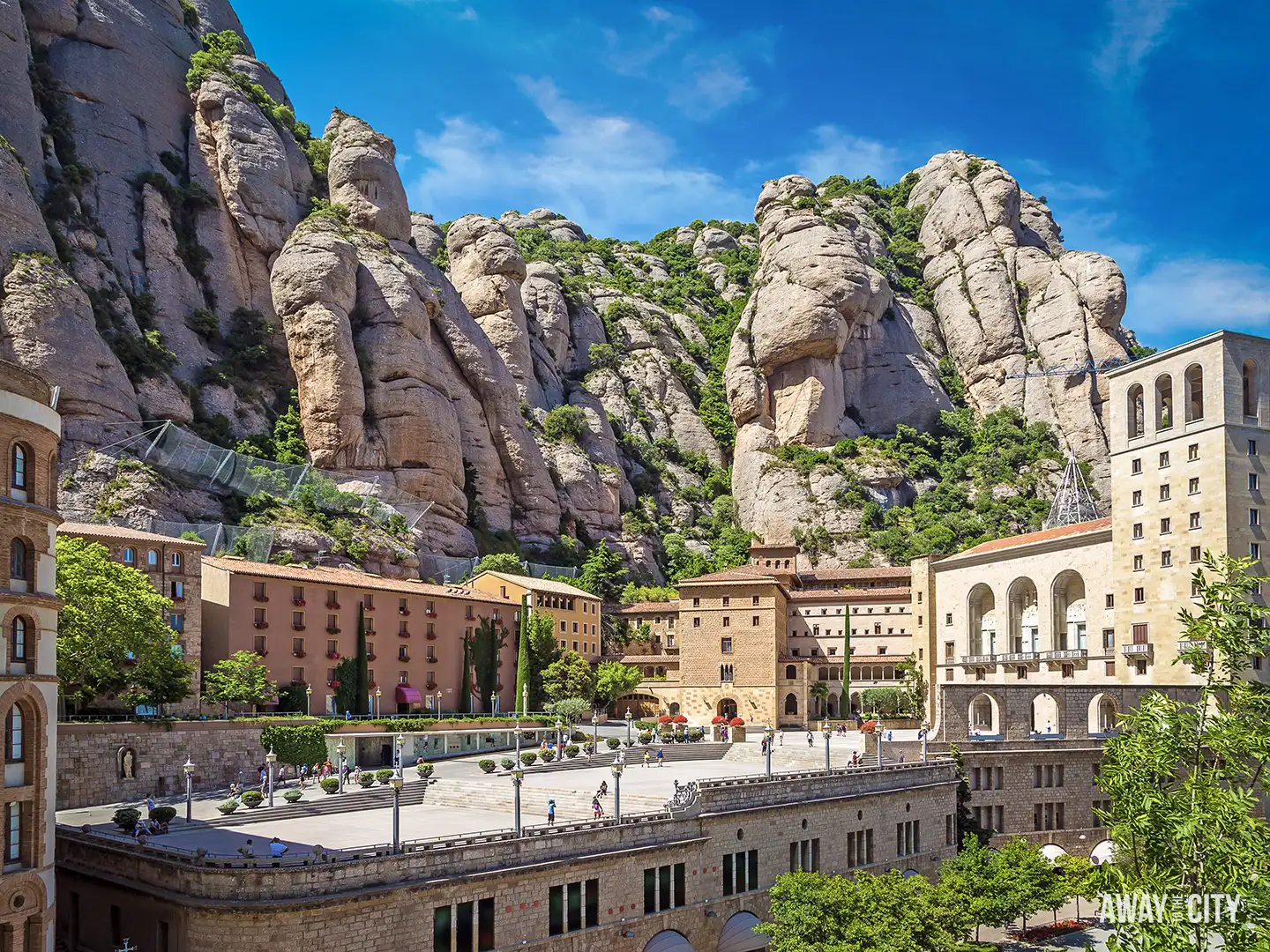
What to Skip in Barcelona (6 Overrated Picks)
Not everything in Barcelona lives up to the hype. Some places look great in guidebooks but end up eating into your time (and budget) without adding much to your trip. After three visits, here are a few we think you can safely skip.
La Rambla
La Rambla is Barcelona’s most famous street, but for us, it doesn’t deserve a place on the must-see list. It’s busy, lined with touristy restaurants, and often feels more like a theme park than a real part of the city.
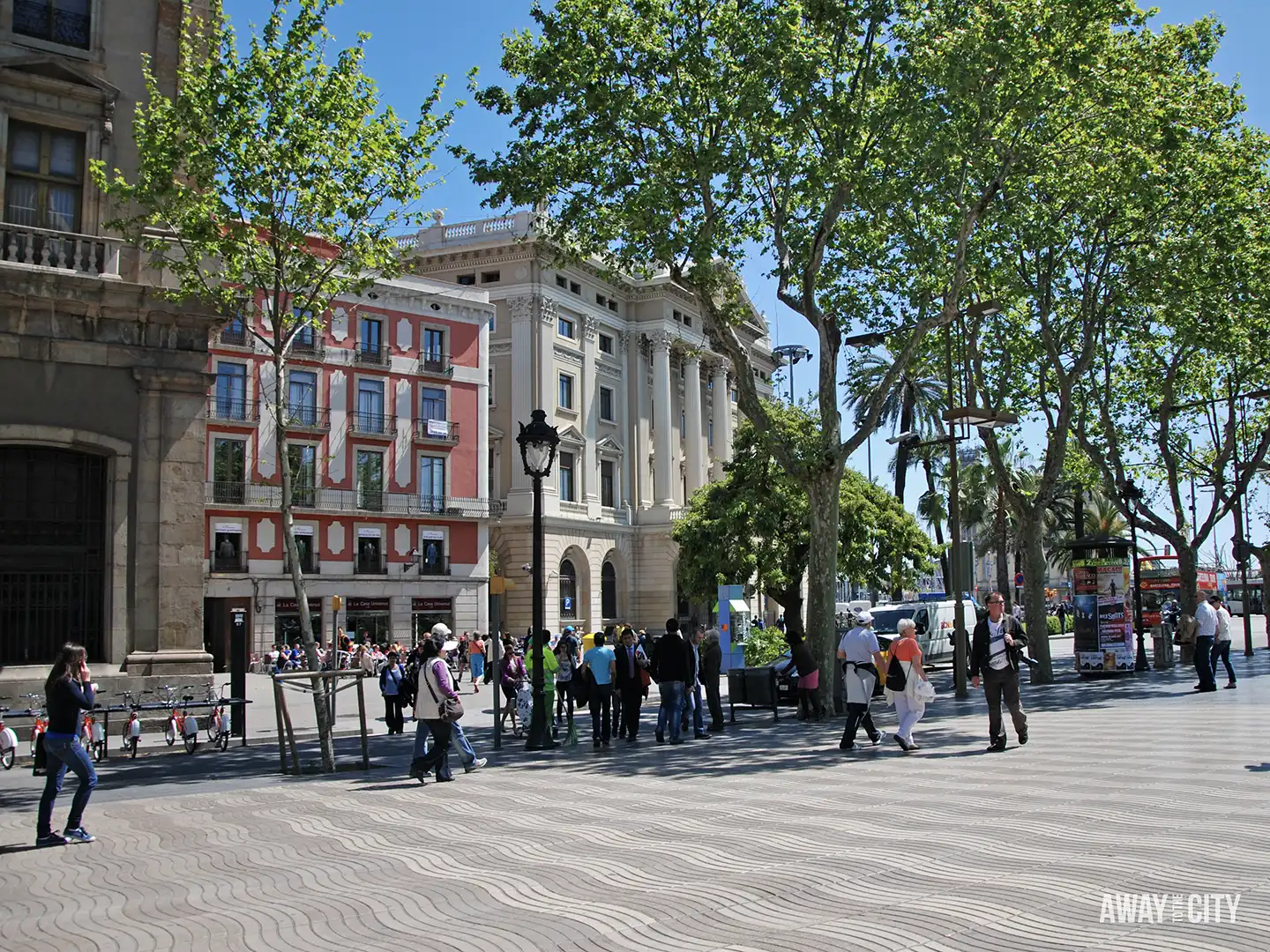
We walked it on our first visit out of curiosity, and while the atmosphere is lively, the food is overpriced, and the crowds make it hard to enjoy.
If you want a central boulevard with more local flavour, stroll along Passeig de Gràcia instead. Not only is it home to some of Gaudí’s best work, but it also gives you a better feel for the city.
Columbus Monument (Mirador de Colom)
The Columbus Monument sits at the end of La Rambla and promises views from the top. In reality, the platform is small, cramped, and the outlook isn’t worth the fee.
You’ll get much better perspectives from Montjuïc or the towers of the Sagrada Família.
Temple of Augustus
We love history, but this one isn’t very rewarding. It’s four Roman columns hidden in a courtyard, and while it’s cool that they’ve survived, it only takes a few minutes to see.

If you’re really into Roman history, it’s a quick curiosity stop, but for most visitors, it’s easy to skip.
Mirador Torre Glòries
The Torre Glòries skyscraper recently opened its observation deck, but the location is too far from Barcelona’s main landmarks.
The views feel detached from the city’s core, and given the ticket cost, there are better places to spend your money.
Mies van der Rohe Pavilion
This pavilion was built for the 1929 International Exposition in Barcelona, now known as the World Expo. Even though it’s nearly a century old, the design still feels strikingly modern.
We’re big fans of World Expos (held every five years) and have been lucky enough to visit recent editions in Dubai and Osaka (you can read our Osaka Expo 2025 review here).

While the Mies van der Rohe Pavilion is interesting from an architectural perspective, there isn’t much inside, and the entry fee doesn’t really justify the visit. We’d say admiring it from the outside is enough.
Montjuïc Castle & Cable Car
This one often appears on “must-see” lists, but we found it totally overrated. The views are decent, but nowhere near as impressive as the ones from Tibidabo or Bunkers del Carmel.

The cable car ride only lasts about five minutes and mostly passes over parking areas and trees. It’s hardly the scenic journey it’s made out to be.
And the fortress itself looks grand from afar, but once you’re there, it’s mostly an empty courtyard and outer walls. There’s not much to see inside. Overall, it felt flat and forgettable.

Interactive Map: Top Activities and Must-See Spots in Barcelona
To make your Barcelona trip planning easier, we’ve put together an interactive map with all the spots and activities mentioned in this guide.
It shows you exactly where the essential Barcelona sightseeing places are, so you can plan your days around what’s nearby.

How to use this map: Click the icon in the top left to see the full list of locations. For a bigger view, open it in a new tab via the top-right icon. You can also save it to your own Google Maps by clicking the star next to the map title.
Where to Stay in Barcelona
Choosing the right base makes a huge difference to your Barcelona itinerary.
For a first trip, we’d recommend staying central, in one of six neighbourhoods that balance location and atmosphere: Eixample, El Born, Gothic Quarter, Barceloneta, El Raval, and Poblenou.
The map below shows these six areas and how they connect with Barcelona’s top sights: [map]
We’ll cover each area in depth in our [Barcelona area & hotel guide], but here are two hotels we’ve stayed in and would happily go back to:

Our tip for booking hotels in Barcelona: Prices spike dramatically during peak season (May-October), and many city centre hotels sell out months in advance. To get the best rates and location, it really pays to book as early as possible!
Here are two hotels we’ve stayed in and would happily go back to:
Chi Hotel (our #1 pick for first-time visitors)

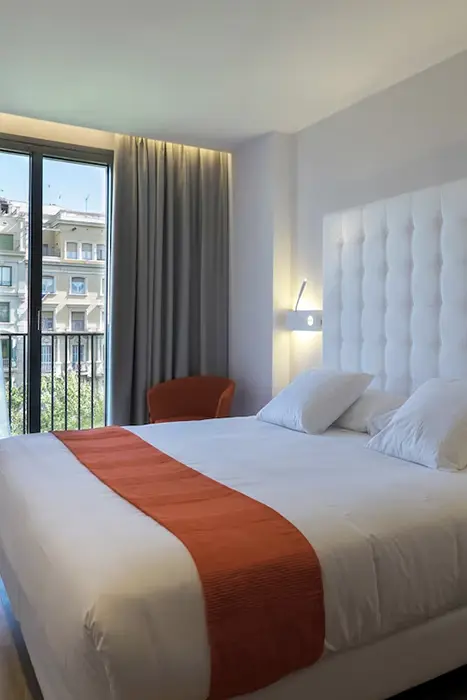
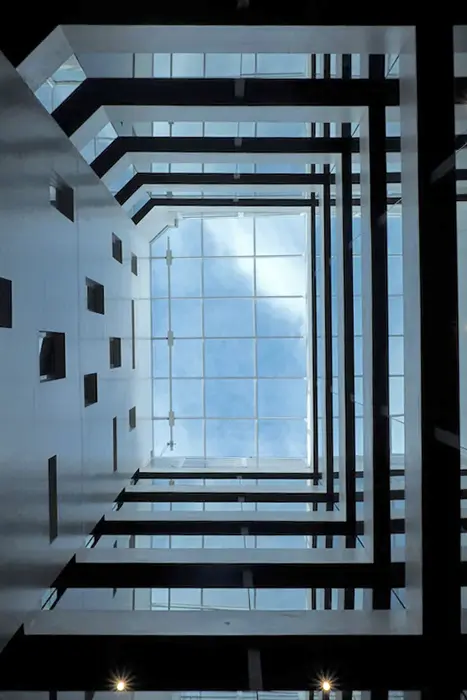
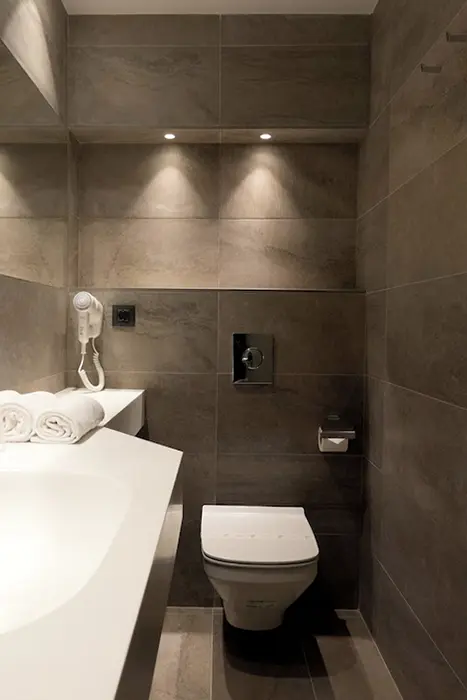
Chi is right by a metro stop, which made arriving from the airport simple (though we mostly walked everywhere).
The rooms are spotless and modern, and the rooftop terrace with pool was a highlight after long days of exploring.
Located in Eixample, our favourite neighbourhood for first-timers, you get stylish surroundings, quieter streets, and easy access to Gaudí’s buildings, shops, and restaurants.
👉 Check availability on Booking.com | Check availability on Expedia
Motel One Barcelona-Ciutadella
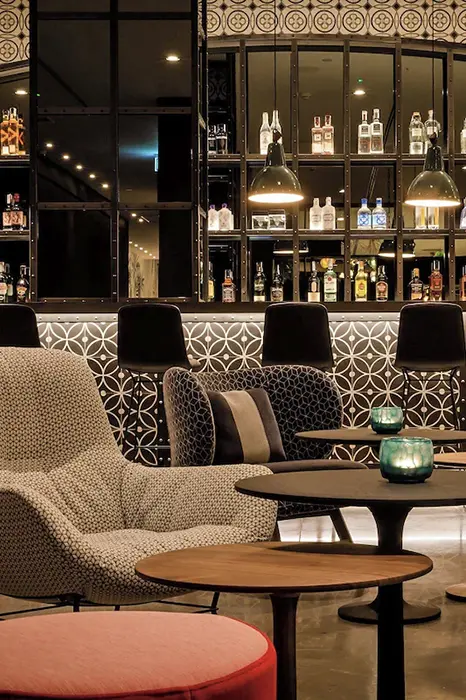
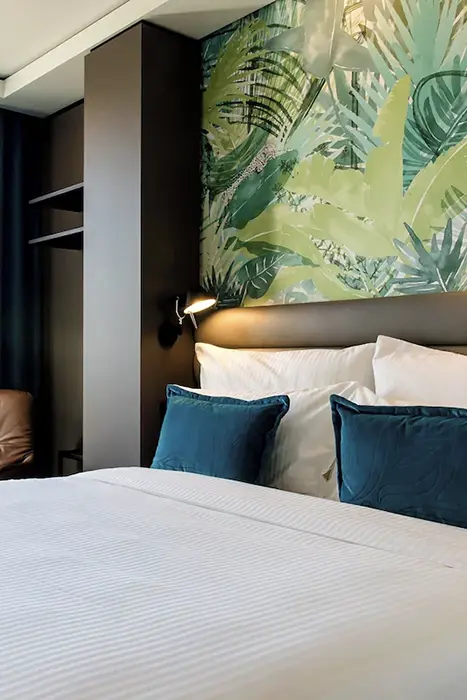
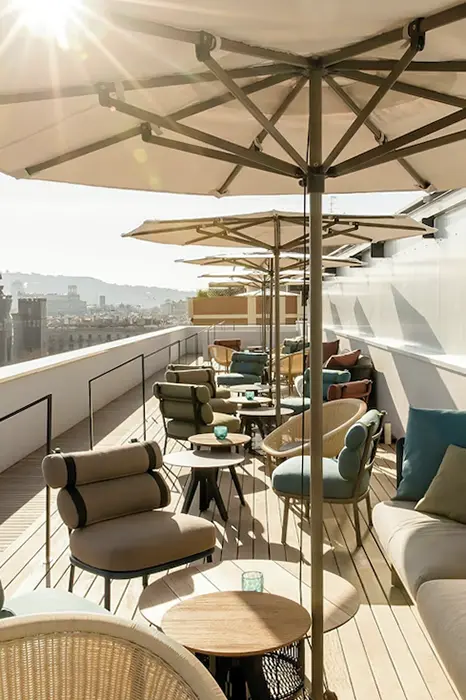
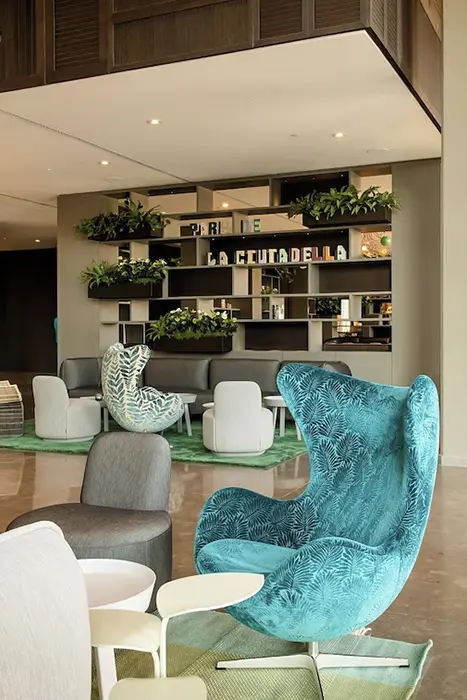
This hotel is a great option if you want to be near the historic heart of the city. It’s next to Ciutadella Park and just a short walk into El Born, which we loved for its atmosphere and dining.
The rooms are modern and comfortable, the beds were excellent, and the rooftop bar overlooking the park made it feel special.
👉 Check availability on Booking.com | Check availability on Expedia

Need more Barcelona hotel ideas?
For more neighbourhoods and hotel recommendations across different budgets, check our full [Barcelona Where to Stay guide].
FAQ: Visiting Barcelona
Planning a trip to Barcelona? Here are a few common questions that might help as you sort out the details:
How many days do you need in Barcelona?
We’d say 3 full days is a good starting point. That gives you enough time for Gaudí’s highlights, the Gothic Quarter, Montjuïc, and a beach break. 4-5 days lets you see even more spots in Barcelona and potentially add a day trip to Montserrat.
We’ve done both short trips (3 days) and longer trips (9 days) in Barcelona, and we found that there’s definitely enough to see.

When’s the best time to visit Barcelona?
Spring (April to June) and autumn (September to October) are our favourites. The weather’s warm without being overwhelming, and the crowds aren’t at their summer peak. July and August can be hot and packed. Winter is quieter and cheaper, but some days feel chilly for outdoor dining or beach time.
Is Barcelona expensive?
It depends on how you travel. We’ve found accommodation costs higher than in other Spanish cities, especially in central areas. Food and drink can be reasonable if you avoid the tourist traps (like La Rambla) and eat where locals do. Entry fees for Gaudí’s sites add up quickly, so budget for those in advance. Overall, it’s pricier than Seville or Valencia, but still cheaper than Paris or London.
Have a look at our must-know Barcelona tips so you can avoid common first-timer mistakes and make the most of your time in the city.
Do I need Spanish to visit?
Not at all. Barcelona is in Catalonia, a region of Spain where Catalan is the local language. Spanish is also spoken, but you’ll hear a lot of Catalan in daily life. Most people working in hotels, restaurants, and the main attractions speak English, and menus are often available in English too. We don’t speak either language and had no trouble getting by without it.
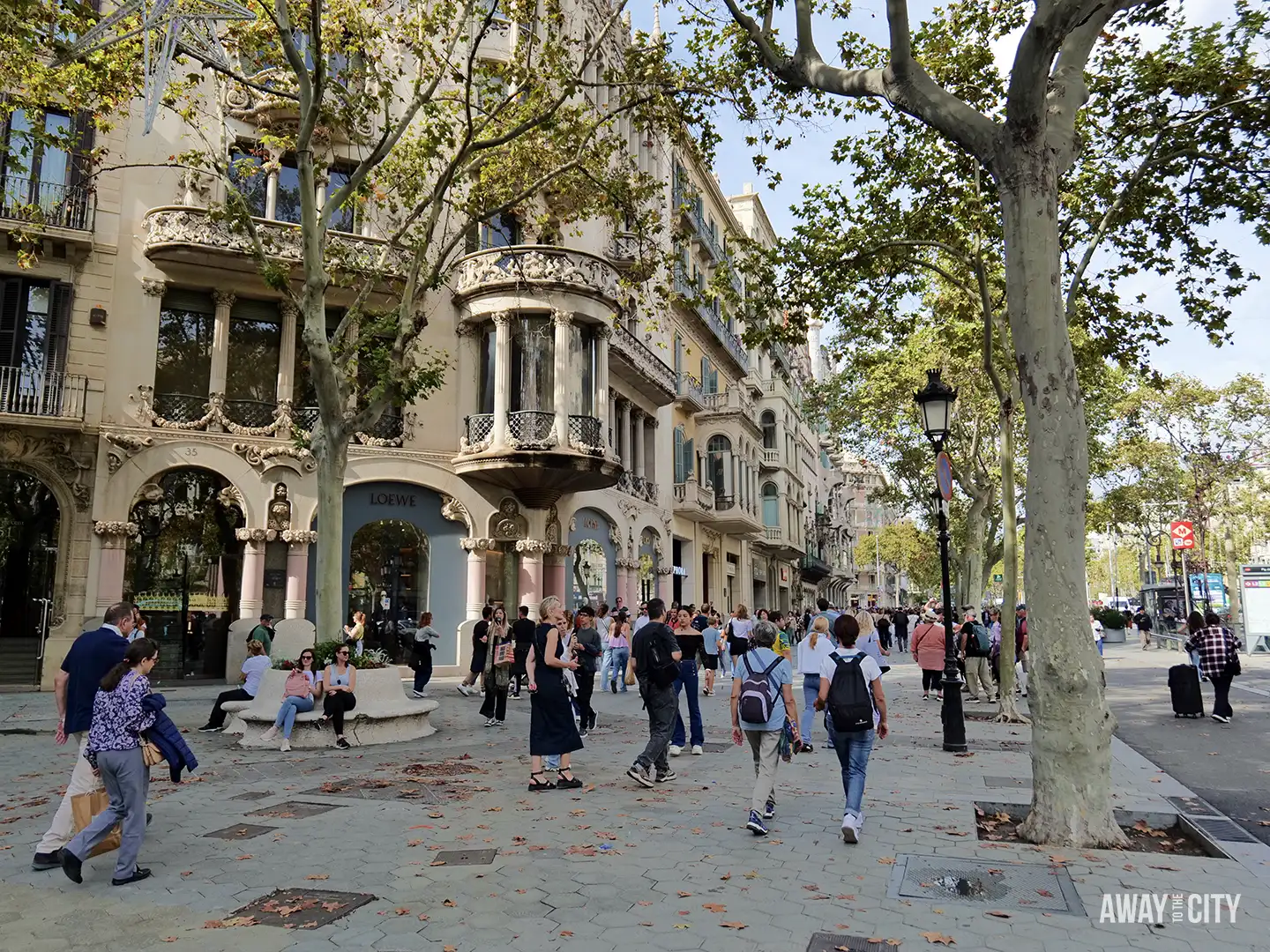
Is Barcelona safe?
Yes, though, like in any big city, you need to stay aware. The main issue is pickpocketing, particularly in crowded areas such as La Rambla, the metro, or tourist sites. We’ve never felt unsafe walking around, even at night, but we’re always careful with bags and wallets. Use the same common sense you would in any busy city, and you’ll be fine.
Your Next Steps for Planning the Perfect Barcelona Trip
After three trips to Barcelona, what we’ve come to appreciate most is how much better the experience gets with just a little pre-planning. You don’t need to tick off everything. In fact, you’ll enjoy it more if you don’t.
But knowing which places are truly worth your time (and which ones aren’t) can completely shift how your trip feels.
If there’s only one thing you do during your first trip to Barcelona, make it a visit to the Sagrada Família. There’s honestly nothing else like it. Just be sure to book ahead so you don’t miss out.
Want to know what it’s like inside? Our Sagrada Família tips for first-time visitors break it all down.
Already thinking about where to stay? Our [Barcelona hotel and area guide] helps you choose the right location for your style, pace and budget, whether you’re after rooftop views, central buzz or somewhere quieter.
And since queues are a real thing in Barcelona (trust us, we’ve been there), don’t leave the logistics to chance. Here’s [what to book before your trip] to save time, skip lines and lock in the experiences that matter most.
Wherever you go in Barcelona, we hope this guide has helped you feel more confident in shaping a trip that feels like yours.
🇪🇸 Plan Your Spain Trip with Our Guides
📍 Barcelona
📍 Seville

